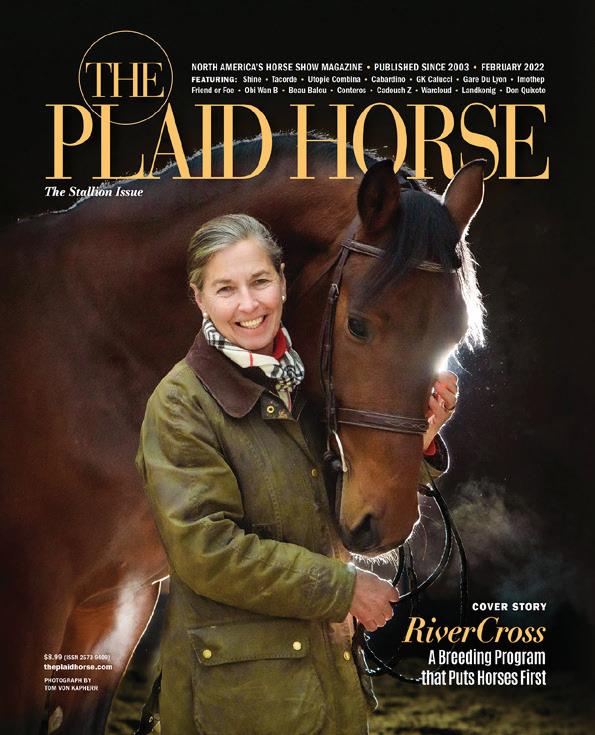





















































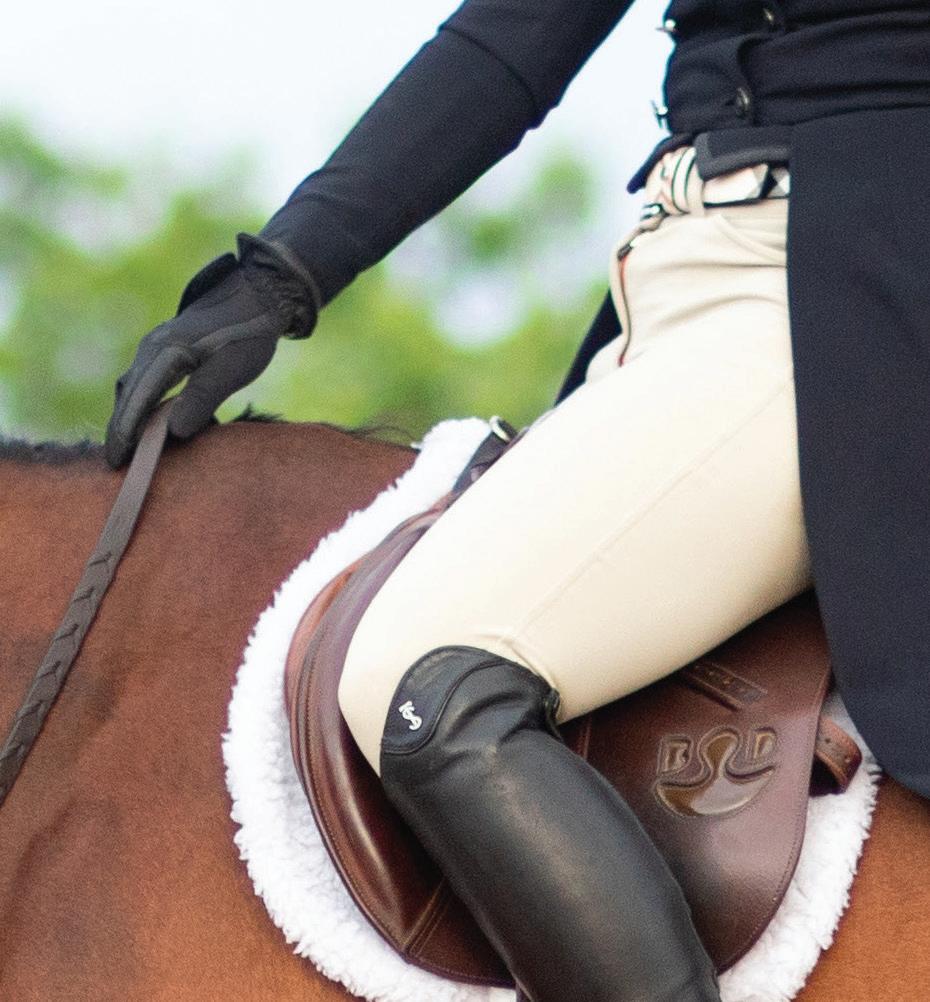

















Historic 1,471± acre estate with c. 1776 stone manor home, Georgian Revival carriage house, extensive farm and equestrian improvements, and a shooting preserve. Listed on both the National Register of Historic Places and the Virginia Landmarks Register.
www.NorthWalesVA.com






Impressive 763-acre equestrian estate approximately 25 miles south of Charlottesville, Virginia. The property showcases a stately Greek Revival southern residence, built circa 1904, extensive equestrian facilities, recreation opportunities, creeks and a pond.





www.GreenfieldsFarmVA.com

Stunning 22-acre equestrian estate, 12 miles from Charlottesville, Virginia, features primary residence overlooking the pool and the Mechums River, and captures a magnificent view of the Blue Ridge Mountains. Includes 3-bedroom cottage, 6-stall stable with living accommodations, trailer shed, equipment barn/shop, and several run-in sheds.
































THREE COURSES
Business and Bias in the Equestrian Industry

Grit, Toughness, and Contemporary Equestrian Coaching
English Riding: History, Culture, and Industry Evolution
ONE 6-WEEK SESSION
June 26 - August 5, 2023
Limited registration
“This course has really pushed me to dig deeper into the economics of the horse business and more critically evaluate the different ventures a horse business may partake in (ex: boarding, training, breeding, sales, etc.). It has emphasized to me the importance of looking at the cold, hard figures and doing numerical analyses to ensure the decision is profitable, which in turn helps the business thrive for longer.”

The Plaid Horse has been published since 2003. This is Piper Klemm’s 83rd issue as Publisher since 2014.
Publisher & Editor-in-Chief
PIPER KLEMM, PH.D.
Managing Editor
RENNIE DYBALL
Art Direction
L/BAILEY DESIGN
Online Editor
APRIL BILODEAU
Advertising
CLARE CIANCIO
NANCY HALVEY
LIZ D. HANCOX
DAWN KIRLIN
Subscriptions & Plaidcast Manager
CIRA PACE MALTA
Plaidcast Production
VICTORIA SHEEHAN
Executive Assistant
PAYTON MEDFORD

WEB: ThePlaidHorse.com

CALL: 541-905-0192
EMAIL: piper@theplaidhorse.com
FACEBOOK: facebook.com/theplaidhorsemag
TWITTER: @PlaidHorseMag

INSTAGRAM: @theplaidhorsemag
PINTEREST: pinterest.com/theplaidhorse
ISSUU: issuu.com/theplaidhorsemag
SUBSCRIPTIONS: subscriptions@theplaidhorse.com
For years, horse owners and show barns have fed weekly bran mashes before a long trip, or after a change in the weather, thinking they were treating their horse to a warm, healthy meal. Now, more people are educating themselves about better nutrition for their horses. With epidemic rates of insulin resistance, Cushing’s and other metabolic diseases popping up, what should we really be feeding our horses?
Bran mash has many myths surrounding it – and one strong fact. It is a century-old out-of-date practice that began when wheat middlings and by-products were given to cattle and horses because it was cheap.
Horses were fed pounds of it every day, upsetting their calcium/phosphorus ratios. Bran was essentially robbing horses of the calcium in their bones and weakening their skeletal structure.
Now, over 100 years later, it has become the practice to feed one meal of bran per week to help prevent colic, act as a laxative, or “clear the gut”. But the bran is doing none of these things. What’s actually happening inside your horse’s stomach is an upset in the delicate balance of microorganisms. Changing his feed once per week to this high sugar, high phosphorous, foreign by-product kills the good bacteria in the gut, which results in diarrhea (commonly mistaken as bran’s laxative effect).
“During peak fitness and international travel, it can be tricky to keep enough weight on Simon but the Fibre-Beet mashes really helps maintain optimal condition. We make sure to bring extra mashes for overseas trips!”
~ Ariel Grald, International 5*Event Rider and TrainerA better solution to feeding bran mash is to give the horse a balanced nutritional “meal” that can be fed in any situation. A healthy mash would:
• offer an optimal fiber source with high quality protein
• be formulated to give the right blend of sugars and fiber
• not compromise the normal feeding program
Mashes are ideal for the horse, as the water content improves digestibility and gut flow to a greater degree than dry feed. Hot mashes warm the body core and help maintain condition in cold weather – or provide quick and simple hydration in warm weather.

Emerald Valley Natural Health has developed high fiber, healthy mashes based on British Horse Feeds best selling Speedi-Beet® and Fibre-Beet®. Crafted with premium ingredients, these mashes offer an easy way to add fiber, water, protein and balance to your horse’s diet at home or on the road.
~ emeraldvalleyequine.com
Ariel Grald and Leamore Master Plan at the Badminton Horse Trials Leamore Master at HorseHelen is going into her senior year at Long Island University-Post, where she is pursuing her degree in marketing and competes on the equestrian team.


Helen’s love for horses began when she was eight years old at a summer camp. Ever since then, she has been working and grooming at numerous barns and leasing a few project horses over the years.
Helen has shown locally in the hunter and jumper rings, and rode on her high school IEA team.
Hannah is a rising senior at Ithaca College pursuing a B.A. in Journalism.
She was atop a horse before she could walk and fell deeply in love with horses after getting her heart pony Popcorn when she was four. Hannah competed at local shows and IEA throughout high school. Now she runs cross country and track for college but stays connected to horses through her passion for writing.
Emma holds a Bachelor of Arts in English and secondary education from Worcester State University and a Master of Education in special education from Merrimack College. While completing her undergraduate degree, Emma was a member and captain of the Worcester State IHSA team. Following graduation, Emma moved back home and began showing in local hunter and equitation rings while beginning her career as a special education teacher.
She looks forward to integrating her love for horses with her passion for writing while learning as much as possible.

Before Littlejohn was an intern, she graced the cover of the October/November 2018 issue



Sophie is going into her second year at Cardiff University, majoring in journalism and English literature. She began riding horses at summer camp when she was seven years old. She spent her junior career competing in the Children’s Hunter and Junior Jumper divisions. Since 2021, Sophie has been living in Europe and continuing her jumper training.
One of her main goals of working at The Plaid Horse is to share her experiences showing and training as an American overseas.
Isabella began riding at age five and spent her childhood committed to competing all over the country in the hunters and equitation.
Isabella went to Texas A&M University where she competed on the NCEA Equestrian Team. She moved abroad to Paris and studied at the American University of Paris, where she received her B.A. with honors in global communications. She is excited about pursuing her passion for horses outside of the show ring by utilizing her love for writing and experience in communications studies.
EXECUTIVE ASSISTANT TO PIPER KLEMM
Payton is the all-around teammate for The Plaid Horse staff. She has been involved in eventing and stadium jumping with small local farms and organizations in South Carolina. Payton graduated early from Clemson University with a B.S. in Animal and Veterinary Science in 2022.


In addition to working with The Plaid Horse, she has started her own small business teaching lessons.






































































“I think the biggest misconception about our sport is you have to be a rider or trainer to have a successful career. There are many more vital roles in this industry.”
—-KATIEWILLIAMS, MANAGER FOR TEDDI PRITZKER, FORMER FREELANCE GROOM • PAGE 94


























I have seen many individuals say no. I have seen the FEI say no both to and for the sport. But for the parent of the child who wants it all, the top hunter owned by an amateur, the pockets that seem so deep that they might as well be unlimited, or the rider or trainer with superior ability or talent or reputation, we as an industry just don’t say no. This isn’t about one particular issue or instance. Our systemic desire to cater to the highest bidder at any cost has led our industry to some very scary places. I get it. We all have bills to pay. We have clients who push our moral convictions while credit card companies are calling us. People want to a ord things that they simply can’t. We have no real system to root out bad payers. We have created people who think it is their trainer’s and others’ responsibility to fuel their child’s career that they cannot or do not want to a ord. We are overwhelmed by people who do not want to put the work in to be able to ride what they can a ord (likely young or quirky).
We all struggle to say no. We look to the le and right and feel better about ourselves. There is no shortage of bad behavior at horse shows—one only has to look around at sharps containers or listen to that telltale click click click treatment sound mere hours or even minutes before a class. There are lame horses trotting into every major show, no matter what the rulebook says about soundness. (If you’re wondering, the US Equestrian Rulebook states: HU 100 Horse Welfare 1. The following acts are prohibited: c. Riding or lunging an obviously lame horse.)
Judges say no one will back them up and they’re pressured to not penalize soundness. The stewards are abdicating responsibility out of fear of retaliation. Everyone tries to keep calm and keep the peace. They do everything under the sun to avoid saying no. Because as an industry, we do not have the courage to say no to our people. Not in our sphere.
We have been cleaned up by external entities. We failed to police ourselves, as did many sports, so SafeSport came in to police our community for us. We failed to protect a pony and The New York Times published a scathing exposé that resulted in the 12-hour rule, among other changes. We have failed our community over and over and have only been brought to task and made positive changes for outsiders.
It is time we make positive changes for ourselves. It is time we stop questioning each other and our motives and speak up when we see something is wrong. It is time we stop living in fear.

How do we start? Self re ection is necessary. It is the responsibility of every rider, owner, and trainer to make sure their horses are properly prepared to compete. If you have any issue that is attracting negative attention, it is cause for some inward thinking.
Everyone should follow the rules and everyone should be proud to follow the rules. Everyone should nd those who cannot follow our rulebook to be a disgrace because, frankly, it’s not that hard. The USEF standards for medication are extremely tolerant and the rulebook covers very few of the o -color instances I see at many shows.
To the trainers: If you nd yourself needing to do extreme things for a ribbon that will never be enough for your client, I urge you to do the math on how much that client is really costing you. What is saying no worth to you?
To the riders: If you nd yourself blaming the steward or management at a horse show, it’s time to think about who you want to be and who might be looking up to you.
To the owners: If you aren’t doing what is right for your horse inherently, remember that doing right by your horse also protects your investment. Sound horses heal more quickly and last longer. Think about how many fewer career horses you might have if they are happy to perform for an extended duration. It is time that we grow up and own our mistakes and errors and correct them for the sake of our horses. The time for being defensive and allowing the carousel of blame to turn is over. I will continue to speak up on behalf of our horses because it is the right thing to do. No matter what I am threatened with, or what people think.
If we all start to say no to each other, and listen to small corrections a little bit at a time, we make our community a place where outside management and sanctions have no rational place.
Piper Klemm, Ph.D. TPH PUBLISHER Follow me on Instagram at @piperklemm




























Imagine taking a riding lesson in between science and English class. Whether a beginner or competing on a national level, Foxcroft School supports every girl’s passion for riding. Riders of all skill levels can find joy in our top-tier equestrian program and 500-acre campus. Girls new to riding will have an exciting world of horsemanship to explore under the guidance of our expert instructors. Experienced riders can qualify for our Exceptional Proficiency (EP) program and train for greatness while receiving an outstanding education.
540.687.4340 | admission@foxcroft.org


“I would’ve never imagined that I’d grow my riding abilities to the extent that I have at Foxcroft and with the help of my amazing trainers.”

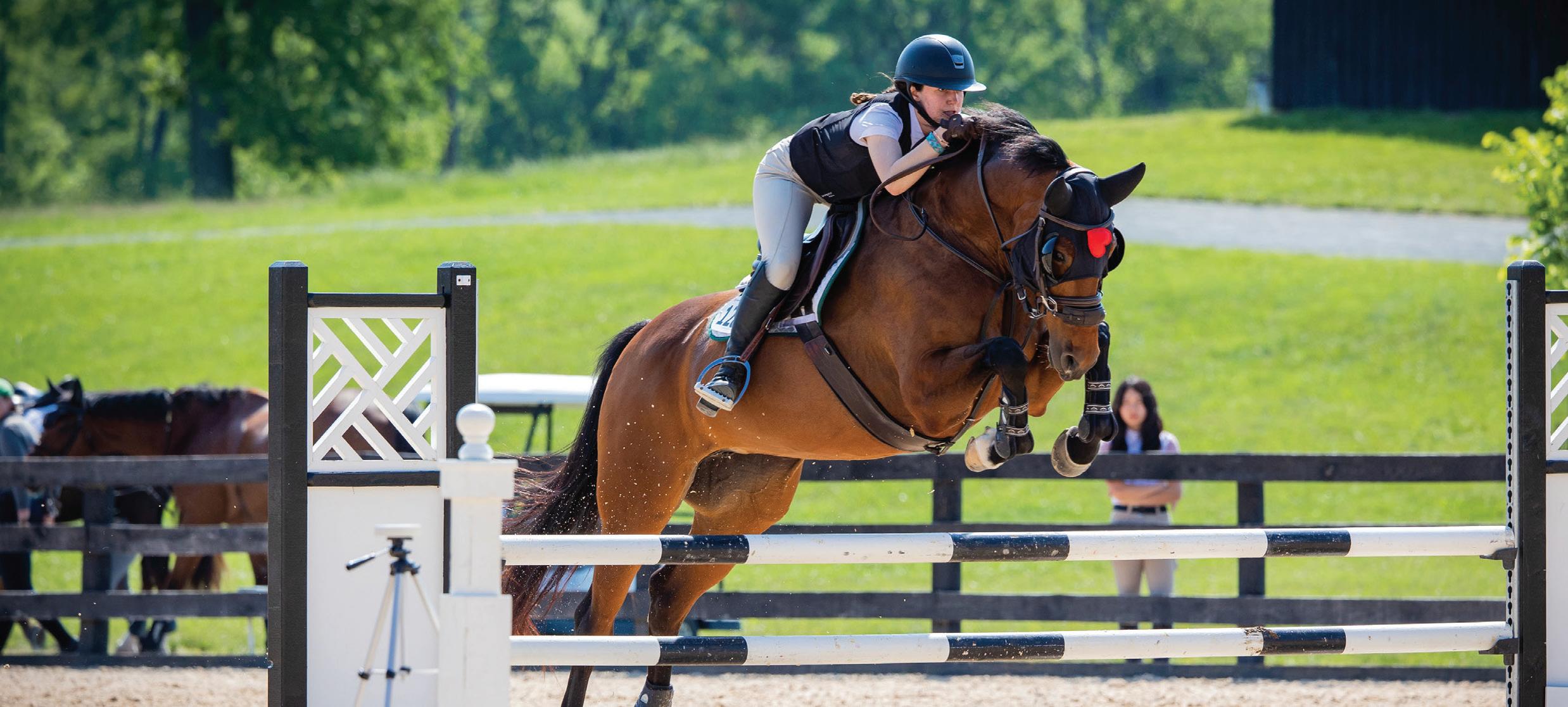 ©Erin Gilmore Photography
— Valeska F. ’26
©Erin Gilmore Photography
— Valeska F. ’26

As we wrapped up our July issue here at The Plaid Horse, wildfires in Canada were affecting the air quality throughout much of the northeast and mid-Atlantic. We asked members of our Adult Amateur Lounge on Facebook about the policies at their barns during times of poor air quality.
I’m just outside Ottawa, Ontario, horses at our barn are all on vacation until the air quality improves significantly.

—EMILIE CHURCH
No riding in the red, no turnout in the purple. My horses got a loooong break last summer/fall out here in the PacNW. I didn’t fully appreciate how impactful it was until after it had cleared...I was fatigued.
—ERIN ALBERDA
Our PLAID HORSE ADULT AMATEUR LOUNGE on Facebook is 9 , 000 members strong. Come join us!
220 here in Upstate NY currently. My boys are outside as long as they stay calm, cool and collected. My stalls are open air so it won’t make much of a difference in or out. I’m electing not to ride or work then at all. Grooming day.
—ABIGAIL MCDONOUGH
My horse is stabled a half hour outside of Philly, and the barn is closed today due to poor air quality! Not worth any risk!
—LILY GISELLE WEIL
We’ve been dealing with this in CA over the past few years. Between 75 and 100 —questionable. Over 100 — no riding.
—ALICE LEPARD MARKS
OUR BARN ASKED THAT WE ONLY DO IN-HAND WORK AT THE WALK. LESSONS AND TRAINING RIDES WERE CANCELLED AT THE ADVICE OF OUR VET.
—HEATHER JONES
—SHANA STORMS
Lessons have been canceled, boarders are at their own discretion. I personally am not doing anything but letting him go out in turnout.
—HEATHER RACHEL







Articles updated daily!
In the first installment of our three-part series, we guide you through everything you can expect to find on a HUNTER course diagram. Plus: some helpful tips on deciphering striding numbers, and how to prevent the dreaded, “rider, you are officially off course” announcement excusing you from the ring.

The U.S. Hunter Jumper Association is pleased to announce MAREN BONUS, LIAM HISSONG, and CARLY WILLIAMS as the 2023 recipients of the USHJA Gochman Grant for USEF Pony Finals. “I cannot express my appreciation and gratitude enough for receiving this grant. Pony Finals has been a long-term goal of mine, but I have never had the opportunity to compete in the Pony division. I am so thankful for this experience to learn from these trainers, clinics and on a new pony,” says Williams.

KRISTI BLOOM is the 2023 recipient of the Jane Savoie Fund for Adult Amateurs and will receive a $4,600 grant to train with HEATHER SALDEN KURTZ and EMILY MILES . Kristi has ridden dressage most of her adult life and began to show when she was 60 years old. With her first horse, General BC, trained by Lisa Rush, Kristi earned her USDF gold medal. The Jane Savoie Fund for Adult Amateurs was established in 2021 by Jane’s family and friends in memory of her lifelong love of horses and career as a trainer, teacher, author, and motivational speaker.

It was a very fair course. When you see a 1.40m course at the regional standard, it can go either where everyone goes clear, or it’s too hard, but this was the perfect balance... It allows you to teach your horses something and if they don’t do it well, it gives you something to go home and practice.”—ERYNN BALLARD, after her victory with CALYPSO DE BLONDE in the $25,000 IDA Development Grand Prix at the ESP June II Show. The pair also won the $5,000 Vita Flex 1.35m Stake the day before. Keswick Horse Show Hunter Classic course
PRESENTED BY

“I am so looking forward to reading Carleton and Traci Brooks’s With Purpose. What I value most about what Carleton and Traci stand for is that they truly listen to and learn from the horses and the riders as individuals more than they simply copy what other trainers are doing. Sadly, in this day and age, this is unusual, and I look forward to learning new and valuable thought processes to implement in my own work.”
—Geoff Teall, USEF “R” Judge, author of Geoff Teall on Riding Hunters, Jumpers, and Equitation





 WORDS: APRIL BILODEAU
WORDS: APRIL BILODEAU
IT ALL STARTED with a hip injury. Amanda Drobnis, Chief Executive O cer of Hilltop BioSciences, was always a horse person. She grew up riding in the hunters and switched to dressage in college. An animal science and business student at the University of Vermont, she was a member of the well-known UVM Co-op, a program where students bring their horses to school and work at the barn in exchange for most of their board.
After college she had a horse in Arizona for a short period of time, but later began to bounce around barns, riding whatever she could.
It was when she was riding a friend’s horse that the pain started.
“Any no stirrup work or anything in a half seat would hurt my hip,” Drobnis tells The Plaid Horse. “I would take a few days off of riding but time off didn’t ease the pain.”
It wasn’t until she was skiing and got stuck at the top of the mountain due to her hip issue that she decided to look into a solution.
Drobnis’ father was working on an alternative medicine product made from birth tissue that would be injected into the hip. The product
was known to have important healing factors that would reduce inflammation and repair the fiber structures in the tissue.
Six months post injection, her hip was completely better and she was back to riding after nearly eight months of pain.
Shortly after, a friend’s horse got injured. Her experience with alternative medicine got her thinking about how she could create something to help animals heal from injuries just like hers. From there, Hilltop BioSciences was born.

The company was first incorporated in 2018 with the goal of bringing innovative regenerative therapies to
ABOVE: Hilltop Bio’s star product, Regenaflex-RT, which is specifically engineered for soft tissue injuries like suspensory and ligament injuries

Amanda Drobnis is leading the way in regenerative therapies—and encouraging women along the way

market in an effort to improve the lives of animals.
Drobnis’s career background was primarily rooted around animals, including an eight year run at Petsmart, primarily doing marketing for their charities among other roles.
With a strong background in both bioscience and marketing, she was able to get the company off the ground quickly, even garnering attention from veterinarians who were interested in the company’s pipeline.

“From very early on, we started working very closely with the United States Show Jumping Team veterinarians,” says Drobnis. “We really respect the relationships that we have with them. They have been an amazing sounding board for us.”
In the simplest terms, the therapies that Hilltop Bio currently has on the market signal healthy cells to come to the spot of injury, inflammation, or need and heal the body. Currently Hilltop Bio’s product line includes solutions for soft tissue injuries, routine joint injections, wounds, corneal ulcers, and summer sores.
Hilltop Bio is working on two studies; one for osteoarthritis in dogs and a blind,
randomized controlled study on horses with asthma.
“Everything we do at Hilltop is rooted in science,” says Drobnis. “We put a lot of energy, effort and time into the science. It’s really something that differentiates us. We see our products through on a scientific level.”
The products that Hilltop has available have helped hundreds of horses and dogs, but one particular type of patient stands out to Drobnis.

“I love hearing about a child’s pony getting back out in the ring after an injury,” says Drobnis. “I love hearing that they don’t have to invest a lot of money and can get their pony back in the ring.”
In fact, Hilltop’s regenerative therapies are typically a more economical option for people. One treatment is usually all each animal needs.
Outside of the office, Drobnis is a mom to two-year-old Ella, who she occasionally will take to the barn to visit with friends’ horses. She says that ninety percent of her day is spent talking to her team and support staff, who she credits the success of the business to, and are also majority female.
“They are amazing. We try really hard as a team to really focus on our company culture,” says Drobnis. “Everyone has a life outside of work and we all have to be supportive of each other’s hobbies and activities and families.”
The feeling from her team is mutual and Drobnis is recognized by staff for being a great boss and a hard worker.
“At Hilltop we have a really good work/life balance, but for Amanda it’s all day, every day,” says Kiira Lizza, Northeast Sales Representative at Hilltop BioSciences. “She’s an amazing boss to work for. It allows me to do what I love and still have time for everything else.”
As a female entrepreneur, Drobnis encourages other women with an interest in blazing a new trail to go for it.
“You can do it! That’s the number one piece,” says Drobnis. “As women, we have a tendency to undersell ourselves. It’s hard for me to really look at what I’ve accomplished and recognize it. My advice is to start out confident. We all have to have the confidence to say ‘I’m super cool.’”
“I love hearing about a child’s pony getting back out in the ring after an injury…that they don’t have to invest a lot of money and can get their pony back in the ring.”
—AMANDA DROBNIS, HILLTOP BIOSCIENCES CEO
• Founded in 1869, Stoneleigh-Burnham School (SBS) is a boarding and day school for girls in Grades 7-12 and Postgraduate (PG).


• Located in historic Greenfield, Massachusetts, SBS has been a member of the Interscholastic Equestrian Association (IEA) since its official inception in 2002.


• T he School boasts five National Titles featuring Middle School and Upper School IEA teams that compete within the largest zone in the country.
SCHEDULE AN IN-PERSON OR VIRTUAL VISIT AT SBSCHOOL.ORG/ VISIT
• SBS is the first and only secondary school equestrian facility in the United States to achieve prestigious certification as a British Horse Society-approved Livery Yard, Riding School, and Facility and offers the esteemed British Horse Society (BHS) Certification Program which is recognized in 35 countries worldwide.

• Offering 7-day boarding, 5-day boarding, and day enrollment options, we invite you to explore SBS!

“We use NibbleNets exclusively in our stalls and round pens. I love the XL size. We fill them twice a day and almost feed a bale of alfalfa hay a day. We have young Thoroughbreds, all right off the track, who can be hard on things. These last unlike any other product!”
—JESSICA REDMAN Owner/Trainer, Benchmark Sport Horses Photos by Carmen Elisa Franco
Photos by Carmen Elisa Franco

















 PHOTO GALLERY
1 Leading trainer Kimberly Williams (center) with show manager Jessi Lohman (left) and Jamie Ditzel
2 Holly Lohmann Stello and Cloud Nine • 3 Rennie Dyball and Hollywood’s Eleven • 4 Kimberley Hill trained Grand Champion Children’s Hunter Outfront and Sydney Boone • 5 Sarah Grace Bowen and RH Rowdy Boy • 6 Nicole Motes and Fortitude • 7 Championship prizes • 8 Jennifer Marshall and Patti Schindler with Pinch Hit
PHOTOS: AMY FLEMMING WATERS, ANDREY SHVETS, AND COURTESY JESSI LOHMAN
MAY 27-28, 2023
PHOTO GALLERY
1 Leading trainer Kimberly Williams (center) with show manager Jessi Lohman (left) and Jamie Ditzel
2 Holly Lohmann Stello and Cloud Nine • 3 Rennie Dyball and Hollywood’s Eleven • 4 Kimberley Hill trained Grand Champion Children’s Hunter Outfront and Sydney Boone • 5 Sarah Grace Bowen and RH Rowdy Boy • 6 Nicole Motes and Fortitude • 7 Championship prizes • 8 Jennifer Marshall and Patti Schindler with Pinch Hit
PHOTOS: AMY FLEMMING WATERS, ANDREY SHVETS, AND COURTESY JESSI LOHMAN
MAY 27-28, 2023





WHEN MOST PEOPLE think of the old-school hunters, they think of Thoroughbreds. While the breed’s reputation in the racing world is incomparable, their presence in other rings across disciplines is more common than one might think.
Thoroughbreds are known to be smart, brave, and enthusiastic about their jobs. While the hunter ring may be a sea of Warmbloods now, TAKE2 Second Career Thoroughbred Program has set out to bring the Thoroughbred back.
“The Thoroughbred is growing in popularity,” Andy Belfiore, Executive Director of TAKE2 Second Career Thoroughbred Program, tells The Plaid Horse. “They can be a little hot blooded and more challenging than the warmbloods, but I also hear they’re the most fun to ride. People think of them as racehorses but they really can do it all.”
TAKE2 is a 501c3 with the mission of finding homes for retired racehorses. The organization acts as a liaison between the racetrack and people searching for a new horse. TAKE2 specifically works with The Thoroughbred Aftercare Alliance, which has accredited organizations that they work with to adopt out horses for their post-track careers.
TAKE2 also encompasses the TAKE THE LEAD program, which was created by The New York Thoroughbred Horsemen’s Association (NYTHA). The TAKE THE LEAD program is a retirement program for Thoroughbreds that
retire from the New York Racing Association (NYRA) racetracks. In their ten years of working together, TAKE2 and TAKE THE LEAD have helped over 1,000 horses find their new homes.
The program was founded by Rick Violette, Jr., a successful Thoroughbred trainer who got his start in the hunter/jumper ring showing on the East Coast. Violette and Belfiore met working on the track when Belfiore joined Violette’s racing stable as an assistant trainer.
“He was at the forefront of finding second careers for these horses,” says Belfiore. “He looked at it as if we’re going to help retire them, we need to provide opportunities for them.”
Violette passed away in 2018, but the organization has stayed committed to carrying out his
LEFT AND BELOW: Cyanea Robine and Riley, Jumper champions of the 2022 TAKE2 Finals at the Kentucky National Horse Show ABOVE: Cyanea was also the TAKE2 Junior Rider champion in the Jumper division in 2022



“If we’re going to help retire them, we need to provide opportunities for them.
—ANDY BELFIORE, EXECUTIVE DIRECTOR talking about the vision of program founder Rick Violette, Jr.
legacy helping retired Thoroughbreds.
In 2012, TAKE2 launched the TAKE2 hunter and jumper classes at horse shows around the country. The division is for Thoroughbreds only. The hunter division consists of 3’ jumps while the jumpers are 1.0 m to 1.05 m.

When the division started, there were eight weeks of horse shows that carried the division spread across three states. Now, the divisions are at horse shows in 23 states and offered at more than 500 weeks of horse shows.
The popularity of the TAKE2 program has grown into the creation of the TAKE2 League, a membership program where horses can compete to earn points toward the $20,000 TAKE2 Hunter-Jumper Finals at the Kentucky Horse Park in Lexington, KY.

Members pay a $50 fee to enroll in the TAKE2 season, which runs from the end of August to the following year’s end of August. In addition to the $20,000 in prize money for the finals, there is an additional $10,000 designated for year-
end high point award winners.
The organization also has the TAKE2 Junior Rider Program presented by Thoroughbred Charities of America, a free program for young riders, as well as the TAKE2 Scholarship drawing, which is open to anyone enrolled in the program attending college or any other educational program.
This year the finals will be taking place at the Kentucky National Horse Show, Sept. 20-24.
While TAKE2 is a horse show initiative, its mission is to promote second careers and secure futures for retired racehorses.
“People who are not on the inside may not realize how dedicated the racing industry is to these horses,” says Belfiore. “Our focus from the beginning
has been to provide for our racehorses even after they leave the track.”
Organizations such as NYTHA have been large supporters of the organization, but Belfiore is hoping to garner more awareness and support from the show horse side.
“One of the most misunderstood elements to our organization is that we are a charity with a purpose; it’s not just for fun,” says Belfiore.
The organization hopes to continue growing throughout the country by being present at more horse shows, as well as continuing their commitment to helping place Thoroughbreds in new homes so they can go on to have long, successful careers.
To learn more about TAKE2 or to get involved, visit TAKE2tbreds.com.
“People think of Thoroughbreds as race horses but they really can do it all.”
—ANDY BELFIORE, EXECUTIVE DIRECTOR
























 Hosted by Piper Klemm, Ph.D., Tonya Johnston, M.A. and Friends
Hosted by Piper Klemm, Ph.D., Tonya Johnston, M.A. and Friends
Purina® RepleniMash™ product isn’t just a treat.
Purina® RepleniMash™ product is a palatable, nutritionally balanced mash that nourishes your horse and their digestive system. Thanks to Outlast ® technology and a science-backed serving of electrolytes built in, this tasty mash can help your performance horse feel their best or simply let your friend know you care. Science is how we do it. Love is why we do it. Put our research to the test at purinamills.com/replenimash





IF THERE’S one thing that every horse person can agree on, it’s that the health and safety of our animals is top priority.
While veterinarians are well-informed on most common equine illnesses, there are still a lot of unanswered questions— and, more importantly, solutions—to be found for contagious infections. While outbreaks of EHV in horses have been in the news as of late, Grayson-Jockey Club Research Foundation has actually been working toward a vaccine for the virus long before the headlines.
Grayson-Jockey Club Research Foundation in Lexington, KY, is a 501c3 organization whose sole mission is to aid in the funding of veterinary research programs to nd answers to the questions that still remain in the world of horse health. It is the nation’s leading source of private funding for equine medical research, since 1940, providing more than $40 million of funding to more than 426 projects at 45 universities around the world.


 ABOVE, FROM TOP: Grayson-funded researcher and University of Georgia Clinical Associate, Professor Dr. Rachel Reed, and her assistant monitor a patient; Grayson research Advisory Committee Chairman Dr. Stephen Reed from Rood & Riddle Equine Hospital conducts a wellness examine at Rood and Riddle Equine Hospital
ABOVE, FROM TOP: Grayson-funded researcher and University of Georgia Clinical Associate, Professor Dr. Rachel Reed, and her assistant monitor a patient; Grayson research Advisory Committee Chairman Dr. Stephen Reed from Rood & Riddle Equine Hospital conducts a wellness examine at Rood and Riddle Equine Hospital
“Equine disease just attacks, that’s how it works.
It doesn’t ask if you’re an Arabian or not.”
—JAIME HAYDON, GRAYSON-JOCKEY CLUB PRESIDENT
The organization started more than 80 years ago, and while the name may make you think of Thoroughbreds, the foundation is deep rooted in all breeds, sizes, shapes, and disciplines.
“Equine disease just attacks, that’s how it works,” Jamie Haydon, president of Grayson-Jockey Club tells The Plaid Horse. “It doesn’t ask if you’re an Arabian or not.”
Grayson Foundation merged with The Jockey Club in the 1980s. Bringing the two organizations together made it possible to open up the research across all aspects of the horse.
Dr. Johnny Mac Smith, the A. Gary Lavin Research Chair of the organization, is a founding partner of Peterson Smith Equine in Ocala, FL. He has served as a key member of the Grayson-Jockey Club Research Foundation team for the last 15 years.
Smith is actively involved in the pursuit of research for equine diseases
turns off the horse’s immune system… where it hides within the horse.”
In 2007, an Oklahoma State University researcher started working with antiviral drugs determining efficacy and protocols to combat the EHV virus.
The process started with the aim of preventing EHM, the deadly form of EHV that causes neurological problems. They found that with the proper antivirals and timing in the initial stages, they could prevent the development of EHM.
“We’ve made several major steps in the treatment of it but now we are back to working on preventing the disease altogether,” says Dr. Smith.
A couple years ago, Dr. John Ballantyne and Fargo-Moorhead Area Foundation, approached GraysonJockey Club Research Foundation about their focus on EHV. Dr. Ballantyne owns
Not only is the goal to prevent all equine herpes viruses, but there is discussion surrounding whether or not the vaccine will be able to help other animals.
“The vaccine is going to need to cover all bases of the virus,” says Haydon.
that travel through any barn, whether the racing stable or the show horse barn.
One particular area of continued research is for EHV, otherwise known as Equine Herpes Virus.
The highly contagious disease has garnered attention for decades with the question still remaining on when a vaccine will be available.
In 1999, Grayson-Jockey Club Research Foundation began looking for an answer to that question by beginning their research for a vaccine.
Since then, there have been several grants to help find different ways to treat the disease and determine why this virus is so persistent within the horse population.
“99.9% of horses have the virus already,” says Dr. Smith, going on to explain that the virus lays dormant in a horse’s system. “There has been a lot of funding towards how the virus
and races Thoroughbreds through his NBS Stables and is the co-founder of the biotech company Aldevron.
The Fargo-Moorhead Area Foundation went on to donate $2,000,000 to Grayson to fund research towards developing a vaccine for the virus. The funding is currently being put towards two studies taking place at Michigan State University and Cornell University.
The study at Michigan State University, which will take over the course of three years, is designed to develop a novel mRNA-based EHV vaccine that protects horses from EHV-1 and will also likely cross-protect against other equine herpes viruses.

At Cornell University, Dr. Bettina Wagner has a two year grant from the organization for the study, “A Novel DNA Vaccine Platform to Control EHV-1 AND EHV-4.” Unlike the study at Michigan State University, this study is hoping to develop a DNA vaccine.
“The scope of the industry is so much smaller than dogs or cats so we really have to show that it covers all bases, and possibly even for multiple species.”
While a vaccine may be the best way to prevent the disease from spreading among horses, there are several things that you can do at home to reduce the risk of spreading any illness.
“Veterinarians have a good understanding of how to handle infectious diseases but it’s important for everyone to follow basic elements of how not to spread disease,” says Smith. “For example, don’t use the same rag when wiping horses’ mouths, don’t use common water sources. Little things make a big difference.”
Says Haydon: “It’s unbelievable how far we’ve come, but we still have a ways to go.”
“Veterinarians have a good understanding of how to handle infectious diseases but it’s important for everyone to follow basic elements of how not to spread disease.”
—DR. JOHNNY MAC SMITH, GRAYSON-JOCKEY CLUB VETERINARY CHAIR

























• An Unparalleled Educational Program.


• The Largest Horse-Related Trade Show in North America.



• The “Marketplace” featuring quality consignments for horse & rider.






















• The Fantasia (sponsored by Absorbine) — Equine Affaire’s signature musical celebration of the horse on Thursday, Friday and Saturday nights.


• Breed Pavilion, Horse & Farm Exhibits, Horses for Sale and Demonstrations — Enjoy meeting horses of all shapes, sizes, breeds, colors, and disciplines!

• Equine Fundamentals Forum — Educational presentations, exhibits, and activities for new riders and horse owners, young & old.


• The Versatile Horse & Rider Competition






A fast-paced timed and judged race through an obstacle course with $5,500 at stake!
• Adoption Affaire — Find and adopt your next horse at the Adoption Affaire.



• Youth Activities and much, much more!
 North America’s Premier Equine Exposition & Equestrian Gathering
North America’s Premier Equine Exposition & Equestrian Gathering
A NEW SADDLE can be one of the most exciting things a horse person can buy. Choosing the leather, the style, and the color are all engaging parts of the purchase.
As exciting as that process can be, it is also very expensive. In 2015, Susannah “Susy” Shearer was experiencing those financial pains while looking for a new saddle.
“I wanted nice quality, but I was on a budget,” Shearer tells The Plaid Horse.
She finally was able to sell her saddle and buy a new one. However, it was difficult to find a used high-end saddle, and there wasn’t much guidance available to help find the right one for her and her horse.


How this popular business provides quality used saddles at affordable prices—with a customized experience

At the time, Shearer just had her second child. She was a vet tech and was interested in going to vet school. After some consideration however, she realized that going to vet school with two young children was not going to be possible.

The concept for the now widely known Highline Tack started out as just a side hustle for Shearer as she figured out her next steps as a mom of two. Friends would give her their saddles to photograph in her backyard, surrounded by trees and flowers, and from there, she would list and sell them.
The business grew in popularity, eventually forcing her out of her backyard and into an office space nearby. From there she hired her first employee who helped clean and ship the saddles around the country.
With the new brick and mortar
space, those who were local were able to come see and try the saddles that she had in her inventory.
When her first employee came on in 2019, Highline Tack had an inventory of 50 saddles. In 2023, they are up to over 500.
Shearer’s team now consists of certified saddle fitters who do both in person fittings as well as virtual fittings.
For the virtual fittings, individuals may order a saddle from their website and, once received, will digitally fit with an expert, and try the saddle for five days.
If they like the saddle, they can purchase it. But if the saddle doesn’t work for them and their horse, they can send it back to Highline for the cost of shipping.
“We tried to come up with something that was fair in all sections of the business, including trying the
saddles and consignment,” says Shearer.
While 75 percent of the Highline Tack sales stem from clients buying from all over the world, the rest of their customers prefer to meet the team in person.
For those who want a hands-on experience with the Highline Tack experts, the company just completed building their flagship location in Chapel Hill, NC—now open to the public.

“Riders will have a set appointment time and pull their trailer up to check in with staff,” says Shearer. “The saddle fitters will assess the horse and pull from our selection of saddles. We have a fitting bay where the horse can get fitted and tacked up so that riders can test out any of the saddles they are interested in.”
While most people travel in from
surrounding states on a day trip, Highline has contacts with several area barns so horses are able to spend the night, allowing for further travel to their location. Given the store’s location in North Carolina, it also acts as an easy stop for those showing in Tryon or traveling to Florida.
The goal is to give both horse and rider a custom experience so that they are able to walk away feeling confident in their purchase.
“A lot of equine medical issues stem from a saddle fit issue,” says Shearer. “It’s just so important to make sure that everything is properly fitted.”

The other aspect of the business for Highline is consigning people’s saddles.
If you’re looking to sell your saddle, Highline will send you a shipping label, so as long as you can print out the label and box your saddle, it’s good to go.
In the first 24 hours of receiving a saddle, the product will be inspected in its entirety by multiple experts. If it passes inspection, it is then cleaned and photographed and put on the website. On average, it takes about three to four weeks for a saddle to sell.
While Highline Tack’s new location is sure to be a hotspot for equestrians to shop, the company can also be
found on the road at both local shows and those in surrounding states, such as Upperville.
Highline Tack carries high end saddle brands such as Voltaire, CWD, and Butet, to name a few. In addition, Highline Tack also has a sister company, Fineline Tack, which offers a large range of other brands at a variety of price points.
Both companies offer jumping and dressage saddles, so there is something for everyone.
Shearer is excited to continue her commitment to helping riders and horses find the saddle that fits them best without breaking the bank.
“I love tack. I’m a horse girl!” Shearer says.
“The goal is to give both horse and rider a custom experience so that they are able to walk away feeling confident in their purchase.”
—SUSY SHEARER, HIGHLINE TACK OWNER






















Good listeners can tune out distractions. They pick up the things said around the barn, in other lessons, between the trainer and the grooms, between the vets and carriers. Good listeners learn to pay attention to what is being said and not being said. This applies to the horses, who don’t talk in words, but have so much to tell us. Good listeners pay attention to how their horse is feeling. They know when he is calm and happy, or nervous and upset.







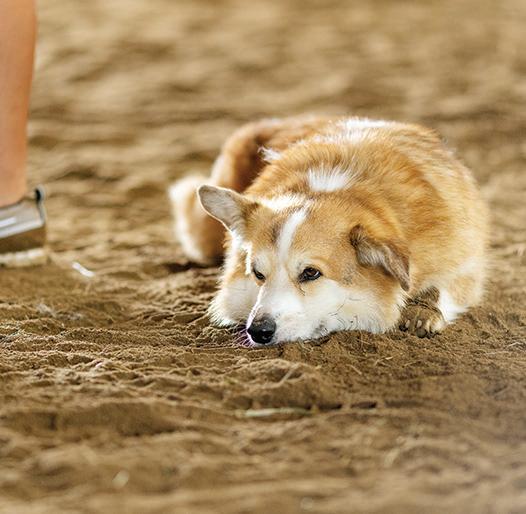

















Bravery is trickier to define. Not everyone is inherently brave. Some people are brave until something goes wrong. Others ride like they are infallible. But to me, bravery is the willingness to keep trying—to keep stretching. To do the hard things even when you think you can’t. To trust the people around you to just do it. You might fail. You might fall. But that is how we grow and learn. It’s ok to be scared, but that fear doesn’t go away by not doing it.


WORDS: APRIL BILODEAU







ELIZABETH EHRLICH AND KIMBERLY ERCIUS grew up like any other horse-crazy kids.
They grew up in North Salem, NY, riding every chance they had. Both remember their dad blasting The Beatles while they talked endlessly in the backseat about trail ride routes, horse care, homemade tack soap recipes, upcoming shows, which horse needed a soapy bath, and brainstorming show names for new ponies.

 PHOTO: GIANA TERRANOVA PHOTOGRAPHY
PHOTO: GIANA TERRANOVA PHOTOGRAPHY
Everything revolved around their desire to be with the horses. After college, they followed different career paths. Ehrlich became a securities litigator at Sullivan & Cromwell in Manhattan and Ercius went on to be an eCommerce and marketing consultant.
More than two decades after their last drive down the bumpy roads of North Salem, they now are the owners of Equine Elixirs, creator and manufacturer of the equine industry’s leading innovative, all-natural and wildly popular supplements for everything from ulcers to hoof support.

It all happened quite naturally, no pun intended. Ehrlich’s mare, Bella, had ulcers that didn’t respond to traditional gastroprotective treatments. Out of frustration, she researched equine ulcers and experimented with different formulations
that replicated what horses would eat that could also serve as a successful gastric maintenance product.
After consulting with veterinarians and significant testing, Ehrlich created a particular formulation of all natural ingredients. It wasn’t long before word got out that her effective, all-natural gastric supplement had finally improved her mare’s ulcers. Barnmates began asking her to create the formula for their horses, which turned into her renting an
extra feed room at the barn so she could manufacture it in small batches for others.
That product, now known as Ulceraser®, has since gone on to help tens of thousands of other horses.
Eight years after her first production of the product, Ulceraser is now mass produced using custom equipment in Equine Elixirs’ own 20,000 square foot warehouse in Wellington, FL, under its founder’s watchful eye.
“We don’t do contract manufacturing

 PHOTO: GIANA TERRANOVA PHOTOGRAPHY
PHOTO: GIANA TERRANOVA PHOTOGRAPHY
“We don’t do contract manufacturing because I want to oversee all quality control in my facility, using my equine only machinery, with my employees.”
—ELIZABETH EHRLICH


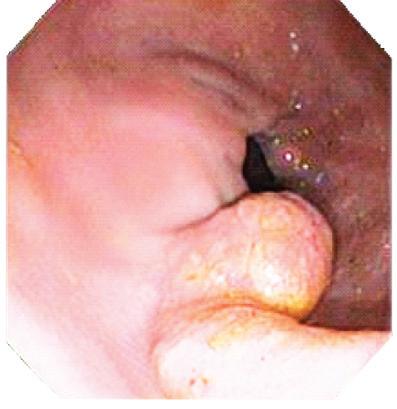



With 13 products now on the market and several more in development, Equine Elixirs is known for its research-driven, all-natural supplements


because I want to oversee all quality control in my facility, using my equine only machinery, with my employees,” Ehrlich tells The Plaid Horse.
During Ehrlich’s first two years in business, she would consult Ercius on branding and marketing.
“She called me constantly asking for help with eCommerce and marketing,”
Both report that it is the most fun, exciting, and unbelievably fortunate thing either of them could imagine. Do they fight? Never. Do they disagree? Sometimes. But their tremendous respect for each other's opinions and areas of expertise makes working through any obstacle as easy as it could be
“Luckily, the vast majority of decisions we make during the day fall very clearly into one of our lanes,” says Ercius.
says Ercius. “I always tell her that she was the most demanding non-paying person I had ever worked with. But, I was excited to be back in the horse world, which I missed terribly.”
After the first few years of informal partnership, Ercius and Ehrlich agreed it made sense to focus exclusively on growing the business together.
Since that time, they have launched thirteen products (with three more on the way in the next year), have a new custom packaging system in the works, and are looking to take on even more warehouse space for their future projects.

As kids, their parents didn’t want them to compete against each other at shows.
“We alternated between showing on weekends and being each other’s groom,” says Ehrlich.
Growing up rooting for each other meant their individual successes and failures have always been shared. It is that foundation of teamwork and partnership that they believe is their greatest strength.
“In many ways I feel like we have always worked together,” says Ercius.
Today, Ehrlich oversees product research and development, operations, manufacturing, and distribution, while Ercius is in charge of eCommerce, marketing, branding, advertising, social media and PR.
People regularly ask them what it’s like to work with a sibling. For them, the answer is quite simple.
“Rarely is there a decision that truly needs to be made by both of us, but when there is, we can confidently present our different opinions, and ultimately support the decision of whichever one of us has more experience or a better gut instinct on a topic,” says Ehrlich.
In hindsight, they chuckle about how their homework styles as kids were very accurate predictors of their business strengths and partnership styles.
Ehrlich would start her homework immediately, and focus for hours without interruption until everything was complete. Ercius, meanwhile, would sit down, organize every pen and pencil by color, and focus on the presentation of her homework before even beginning.
These days, Ehrlich will call Ercius with a new product idea and before she’s finished explaining the technical concepts, Ercius will start rattling off product names, packaging, color palettes, and product personalities.
Though neither of them set out one day with the intention to build the Equine Elixirs brand into the full line of supplements that it has become, they couldn’t stop themselves from getting excited about new ideas and bringing them to life.
In hindsight, the decision to leave their respective careers seems obvious, but they could not have predicted that their childhood love of horses would bring them back to their original passion.
“In many ways I feel like we have always worked together.”
—KIMBERLY ERCIUS



 WORDS: PAIGE CERULLI
WORDS: PAIGE CERULLI
WHEN PAIGE Mc CASLIN suffered a bad fall, landing on a jump in 2014, she experienced excruciating back pain. The accident came two weeks before a major show, and when she rode in the competition, she found that the pain significantly impacted her confidence.
Now in her twenties, McCaslin has also experienced knee problems and had surgery on her left ACL. “I had a very hard time returning to riding after the surgery,” she tells The Plaid Horse. Today she’s a trainer and owner of Fiery Manners Hunter/ Jumper Academy in St. Louisville, OH, and prefers to ride without stirrups, which helps to relieve the pressure on her knees.
Such modifications allow her to ride, but she still experiences the mental side effects from her injuries. “When your body doesn’t work like it used to and you’re trying to get it to do what it needs to, it affects your confidence,” McCaslin says.
When asked about their past injuries, most equestrians will share stories of dramatic falls, being stepped on or kicked, or any number of other ways that they’ve been injured around horses. But while injuries are common in the sport of riding, the impact of pain on riders goes overlooked.
Understanding the mental effects of pain starts with understanding how pain physically affects riders. Michele Hollis, M.D., explains that pain has wide-reaching effects on riders and
their performance in the saddle. Hollis, who is both a board-certified Emergency Medicine physician and an equestrian herself, provides urgent care house calls in Wellington, FL, during the Winter Equestrian Festival with her practice, Hollis Med.
“The effects depend on the type of pain that you’re dealing with,” says Hollis. “From musculoskeletal to acute, whole body to chronic autoimmune conditions, there are all kinds of pain. When you’re not able to move freely or use all the parts of your body in the way that is best to maximize efficiency, then your
performance is going to suffer.” Hollis notes that pain often affects a rider’s balance, core, and ability to effectively use both sides of their body.

Taylor Campbell, the National Team Physiotherapist for Equestrian Canada and co-owner of Prospect Physiotherapy, explains that pain can have significant impacts on an equestrian’s overall position and riding style. Most often, Campbell sees that riders try to guard or protect the painful area to avoid additional pain or injury. In an attempt to protect themselves from pain, riders may tense their muscles, alter their balance, or otherwise change
their position in the saddle.
“These compensations can affect the rider’s ability to communicate effectively with their horse, as well as their horse’s ability to perform correctly,” says Campbell. “Guarding can also impact the horse’s way of going, as the rider’s altered position can affect the horse’s balance, rhythm, and movement. Over time, the muscular imbalances or strains seen in the horse correspond very closely to the physical patterns that I see in the rider, which actually makes perfect sense.”
If left unaddressed, the rider’s compensations can become habitual and lead to
When you’re not able to move freely or use all the parts of your body in the way that is best to maximize efficiency, then your performance is going to suffer.”
—MICHELE HOLLIS, M.D.
FEATURE
additional issues, like weakness, fatigue, stiffness, and decreased range of motion.
For example, a rider experiencing pain and tightness on the right side of their back might shift their weight toward the right, increasing the pressure in their right seat bone. That uneven weight distribution can create tension in the right side of the horse’s back. The horse will naturally adjust its balance to compensate, and bulge slightly to the left, creating a rightside bend in the horse’s body. That postural shift would eventually tighten and shorten the muscles along the horse’s right side.
Such alterations to a rider’s posture, security, and overall performance in the saddle carry mental implications, too. Janet Sasson Edgette, Psy.D., M.P.H., is an equestrian sports psychologist and a re-

nowned child and adolescent psychologist. She is the author of seven books, including Heads Up! Practical Sports Psychology for Riders, Their Families & Their Trainers, and The Rider’s Edge: Overcoming the Psychological Challenges of Riding. Edgette explains that pain can have tremendous psychological impacts. “Pain in general is exhausting, not only physically but mentally as well,” she says. “It takes up a lot of real estate in a person’s mind, making it hard to focus on other things. It’s easy to imagine how that would negatively impact a rider’s ability to attend to all the details that make a difference in our horse’s health or performance.” For example, if a rider knows they have a limited window of time to be physically active before they get tired, they might opt for a shorter warmup than is ideal.
Edgette notes that the cumulative effects of riding in pain can impact how an equestrian feels about themselves as an athlete and a competitor. “Everyone wants to feel on top of their game, especially if competing, so anything that compromises that can affect a rider’s self-concept as
well as her self-confidence,” she says. “Worrying about whether your back pain will return on show day or become acute as you head into the show ring is very distracting for a rider. It can cause her to ride more cautiously, which sometimes translates into riding less assertively.”
Campbell says that she frequently sees pain cause anxiety for riders. “Pain can also lead to feelings of frustration, helplessness, and discouragement, particularly if the pain is chronic or difficult to manage and limits their ability to ride,” she says.
Since chronic pain can impact a rider’s sleep and energy levels, it can cause fatigue and feelings of depression: “All of these psychological impacts can further lead to a loss of confidence and affect the rider’s performance, motivation, relationship with their horse, and enjoyment of the sport.”
Pain can also interfere with competitive goals. Hollis notes that riders recovering from an acute injury may feel that they don’t have enough time to adequately
After suffering a bad fall landing a jump in 2014, Paige McCaslin has continued to experience pain and challenges
prepare for a competition, so they may try to rush the process, potentially resulting in reinjury.
“Being unsure of whether you’ve started back too quickly could affect your confidence,” says Hollis. “Fear of a reinjury can impact your confidence, as well.”
It’s essential for competitive riders to develop an integrated support team of trusted healthcare professionals and a trainer, notes Campbell. “The goal of an integrated support team is to allow for open communication between team members to create a holistic approach to rider recovery and development,” she says. A support team should consist of a trainer, physical therapist or chiropractor, mental performance coach, and sports nutritionist or dietitian.
Campbell explains that trainers play a crucial role in helping riders to manage physical limitations. “Given their unique position in observing riding patterns and performance, trainers are often the first to notice any changes in a rider’s abilities,” Campbell says. “For instance, if a trainer consistently finds themselves issuing the same cues to a rider, such as “drop your
PHOTO: WINSLOW PHOTOGRAPHY“Maybe you have training or competitive goals you really want to reach, or you simply love the smell when you walk into the barn. Once you figure out some facet of riding that really keeps you engaged in the sport, find a way to keep that front and center in your mind.”
—JANET SASSON EDGETTE, PSY.D., M.P.H.



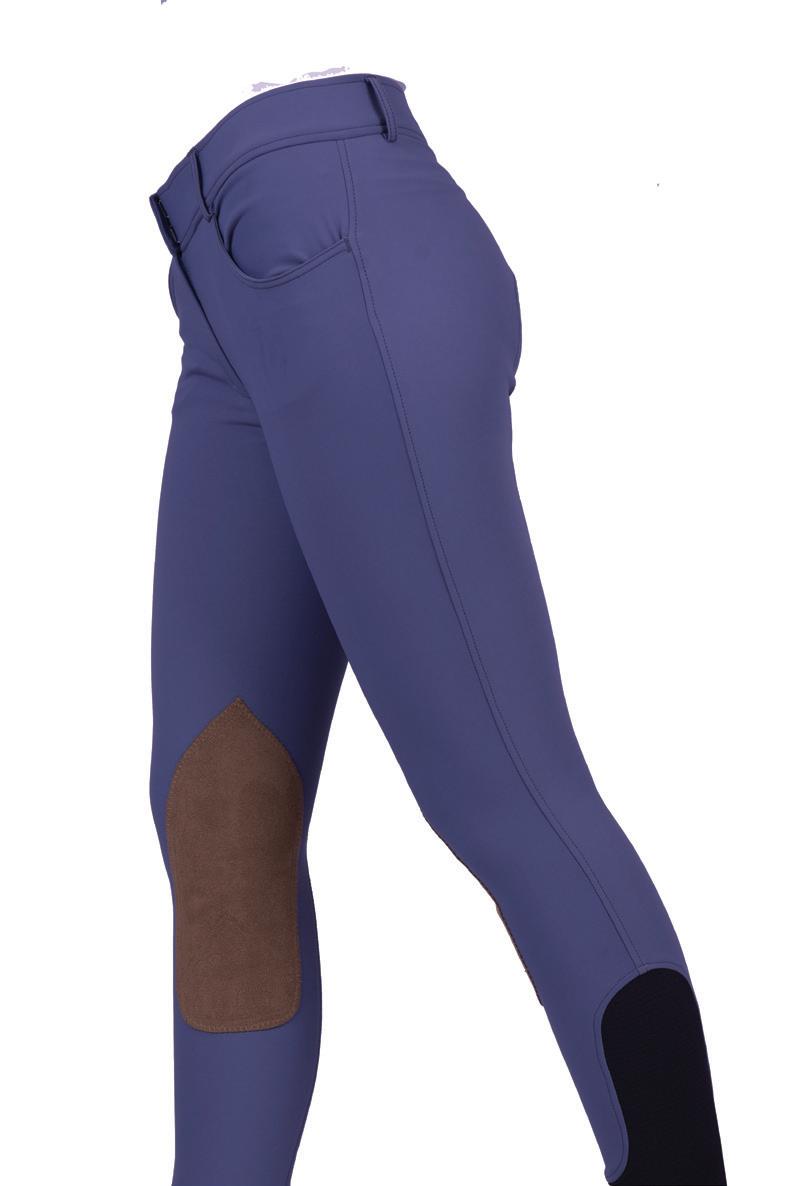





Taylor Campbell, the National Team Physiotherapist for Equestrian Canada and co-owner of Prospect Physiotherapy, shares the following steps for managing pain as an equestrian:
• Consult with a healthcare provider to identify the underlying cause of the pain and develop a treatment plan. That plan might involve medication, physical therapy, psychotherapy, or other management strategies.
• Work with a good trainer who can help the rider modify their riding technique or use equipment to accommodate their pain. Trainers should work closely with healthcare professionals to develop a customized training plan accommodating the rider’s physical and mental limitations while supporting their overall training and competition goals.
• Practice relaxation techniques like deep breathing or visualization to help manage pain and reduce anxiety. These techniques can be practiced in and out of the saddle.
• Take breaks as needed if the pain is severe or causing significant discomfort. A rider may need to reduce the frequency or intensity of riding sessions until the pain is better managed.
right shoulder,” it may be beneficial to seek the expertise of a physical therapist to address any underlying pain or myofascial issues.
By working collaboratively with medical professionals, trainers and riders can modify training plans and set realistic goals that take any physical limitations into account.
There are several ways that riders can take an active role in managing old injuries and preventing future ones. “Depending on where the old injury is located, it’s generally thought to be a good idea to try to strengthen the area around the injury,” Hollis says. “If a knee is injured, you want the quads to be stronger. Stretching is great for helping to loosen up muscles, but strengthening exercises are important as well. Pilates is a great strength and balance training form of exercise that will be useful for any rider, whether injured or not.”
Strength training can also help to protect joints from future injury. Hollis encourages riders to make sure that their position in the saddle is correct, their core is strong, their equipment is properly adjusted, and their stirrups are the right length.
Pain can alter a rider’s position, lead to new problems in the saddle, and prompt a loss of confidence. It can also cause significant fear. Edgette encourages riders to take their fears seriously, rather than trying to talk themselves out of being afraid or minimize the impact of their fear.
“Calling fears ‘irrational’ doesn’t make them any easier to manage,” says Edgette. “In fact, I’ve found that fears are usually very rational when you think of them in terms of how our brain and body are always trying to protect us from harm. When we don’t like the things we feel or think, we tend to dismiss them by calling them irrational or ‘negative.’ But that gives us an excuse to avoid being totally honest with ourselves about how much pain we’re in, and what the steps are to remedy it.”
Edgette encourages riders coping with pain to determine what it is that keeps them in the sport of riding. “Maybe you have training or competitive goals you really want to reach, or you simply love the smell when you walk into the barn,” she says. “Once you figure out some facet
of riding that really keeps you engaged in the sport, find a way to keep that front and center in your mind.” For example, a rider could post a photo of a horse show they want to qualify for on their fridge.

When it comes to setting goals, Edgette highlights the importance of a personalized approach. “Everyone comes to the table with different aptitudes for enduring or mentally blocking pain,” she says. “That said, I return to the idea of being thoroughly honest with oneself and one’s riding and health care teams as the best starting point, while at the same time understanding that grief for what one has lost, in either the short or the long term, is as much a part of the sport as all the moments of glory that we draw from it.”
From joint supplements to PEMF therapy to equine bodyworkers and more, riders have their choice of a wide range of options to support their equine partners and help them to feel their physical best. But when it comes to riders themselves, that same focus on physical comfort and wellness is lacking.
“I think traditionally, riders have been perceived as secondary to the horse in a partnership, with the focus primarily on the horse’s physical well-being,” says Campbell. “From my experience working with this demographic, riders are also just a physically tough group of individuals with a high pain tolerance and often prioritize their performance over their own discomfort or pain.”
Campbell cautions that the implications of overlooking the rider’s well-being can be significant. “While I may be biased, I believe that the biggest factor affecting our horses is ourselves,” she says. “Riders who are in pain or discomfort may develop compensatory patterns and be less effective in their riding and training, which can ultimately impact the horse’s movement and overall performance.”
“It is so important to recognize that the rider is a critical component of the equation when it comes to equine athlete performance and comfort,” says Campbell. “By prioritizing the rider’s well-being and providing the support needed to manage pain, riders can be better equipped to perform at their best and, in turn, allow their horse the opportunity to perform at its best.”






 ABOVE: Maddie Chenworth topped the $30,000 EPIC Sporthorses Grand Prix aboard Navaro van’t Verahof
NEAR RIGHT: Nada Wise and Stevie Ray win the Antares Award
ABOVE: Maddie Chenworth topped the $30,000 EPIC Sporthorses Grand Prix aboard Navaro van’t Verahof
NEAR RIGHT: Nada Wise and Stevie Ray win the Antares Award
JUST OUTSIDE of Houston, you’ll find one of the oldest horse shows in America—The Pin Oak Charity Horse Show, held at the Great Southwest Equestrian Center in Katy, TX.


Since the first Pin Oak Charity Horse Show in 1946, the show has benefitted Texas Children’s Hospital, first providing funds to plan the hospital then providing the first million dollars to begin construction. Today, Pin Oak remains committed to their original mission, donating $225,000 to the Texas Children’s Radiology Department. The continuous support from Pin Oak’s sponsors and exhibitors have now set the highest donation to date.
As the legacy of the Pin Oak Charity Horse show continues, the Great Southwest Equestrian Center is proud to host this annual competition and has often acted as a springboard, launching the careers of many of their exhibitors. From March 22-April 26 of this year, Pin Oak offered three weeks of hunter/ jumper competition in addition to the historic Breed Show, highlighting the American Saddlebred.
To kick off her first trip to Pin Oak, Allison Kroff won the $10,000 Kroff Stables Welcome Stake. Kroff and T-Quick Hurricane Z topped a 17-horse field to clinch the win on March 30. Kroff was one of only nine entries to jump without fault over the first-round course designed by Oscar Soberon.
“T-Quick Hurricane Z was amazing! She’s very opinionated, as am I, so we always say that we’re quite similar in that we don’t want to be told what to do. The truth is she’s trying so hard and so am I; we’re on the same team,” says Kroff, of Scottsdale, AZ.
Nicolas Gamboa reigned supreme as the leading Grand Prix rider of Pin Oak. Gamboa took the top spot in three Grand Prix at this year’s show, including the $25,000 Royal Sport Horses Grand Prix, the $50,000 Hildebrand Fund Grand Prix, and the $100,000 Third Coast Bank Grand Prix. Pin Oak is a special show for Gamboa, who secured the first Grand Prix win of his career in the 2022 $100,000 Texas Children’s Hospital Grand Prix.

“NKH Mr. Darcy has just been a fantastic horse for me,” says Gamboa, 22. “He’s given me so much confidence. I’m just so honored and grateful to have that ride. I have to say a very special moment for me was winning my first Grand Prix here at Pin Oak with him.”

Continuing the tradition of
maiden Grand Prix victories, Maddie Chenoweth, 26, earned the first Grand Prix victory of her career on April 13, topping the $30,000 EPIC Sporthorses Grand Prix aboard Navaro van’t Verahof. Pin Oak Grand Prix royalty, Nico Gamboa and NKH Mr. Darcy was the first pair to jump off. They laid down a time of 36.520 seconds that would keep them atop the leaderboard until Chenoweth’s return as the top entry.
Chenoweth and Navaro van’t Verahof flew across the final EPIC Sporthorses oxer in a winning 34.870 seconds for the win. “I’ve grown up coming to these horse shows, and I’ve actually never won a Grand Prix before,” says Chenoweth. “I’ve

just stepped up to the Grand Prix with this horse Week I of Pin Oak, so it’s been a pretty unreal experience with him.”
A single point separated Nada Wise on Stevie Ray and Jennifer Alfano on Ivy League at the end of the first round of the $30,000 USHJA International Hunter Derby Week I, sponsored by Leaving One Out LLC. A seamless handy round lengthened Wise’s lead and cemented the win for Stevie Ray that Friday evening.
“They always try to make it so special, and we get to see new faces come in,” says Wise of her experience at Pin Oak,
who has a group of 19 horses, including junior and amateur mounts, competing at this year’s show. “We always have a crowd. It just feels like everyone likes to support each other when they’re here, which is a great feeling.”
Also earning a derby win during Week I was another frequent Great Southwest Equestrian Center exhibitor—Mindy Coretz of Eighteen Acres Farm. Coretz rode Chagall and Rise Above to a one-two finish, respectively, in the $10,000 USHJA National Hunter Derby. Chagall is “definitely a horse we can count on,” says Coretz.
Kelly Lorek and MTM Campedu claimed a last-minute victory in the Week II $25,000 Olde Oaks featured Hunter
Classic. The second-to-last to return, Lorek and MTM Campedu laid down the high-score round of the night, earning scores of 88 and 89 from the two judging panels for a second-round total of 177 and an overall score of 352.
Courtney Lenkart and Glorieus made a glorious return to the winner’s circle, winning Pin Oak’s second featured hunter class, the $30,000 USHJA International Hunter Derby sponsored by Augusta Pines Farm. Following a long journey healing an injury, Lenkart was unsure Glorieus would make his return to the show ring. “This is our first international derby since his injury,” says an emotional Lenkart. “So, it’s super, super special. It’s
been a really long journey. We’ve won a lot of great classes together, but we never thought he could come back.”
Additional major hunter victories were Katie Kantrovitz and Emily Williams. Kantrovitz and her own Opportunity Mars topped a field of 40 entries to win the $10,000 USHJA National Hunter Derby-Junior/Amateur, while Williams and MTM Incanto, owned by Skylar Sneathern, bested a field of 18 to win the $10,000 USHJA National Hunter Derby-Open.

The Pin Oak Charity Horse Show continues next year from March 20 to April 14, 2024, at the Great Southwest Equestrian Center in Katy, TX.

“They always try to make it so special, and we get to see new faces come in... We always have a crowd. It just feels like everyone likes to support each other when they’re here, which is a great feeling”
—NADA WISE



















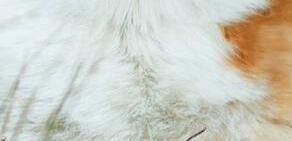









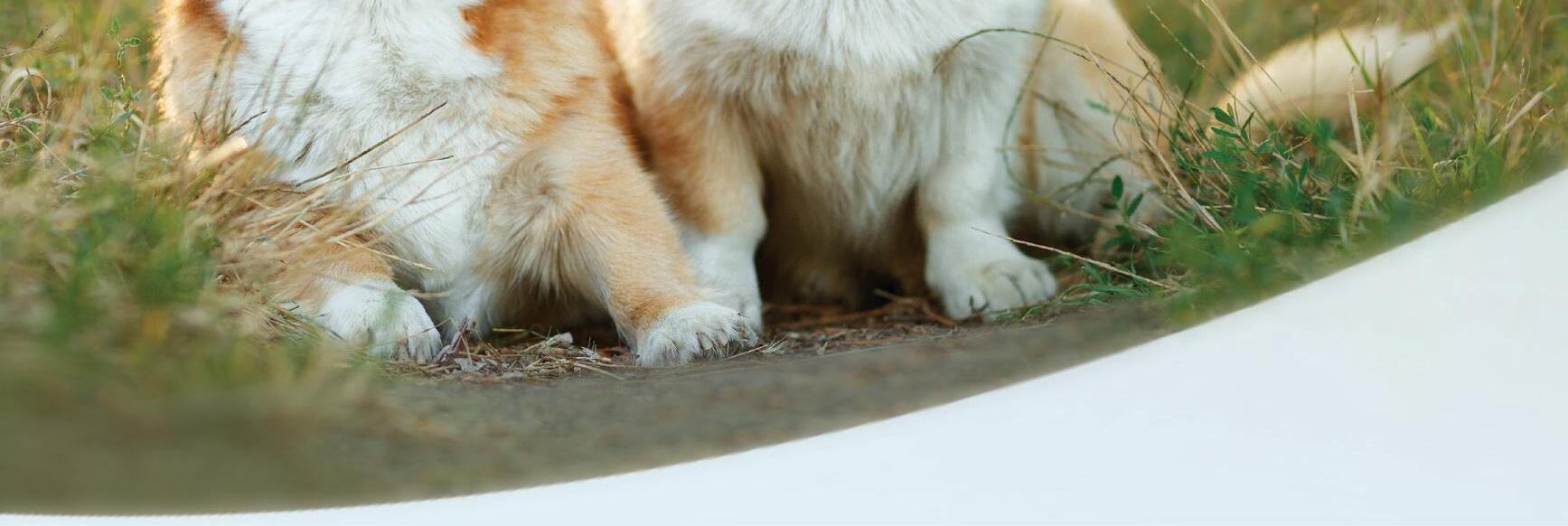


















 WORDS: JACKIE McFARLAND
WORDS: JACKIE McFARLAND
EVER PONDERED the law and how it applies to horses? Whether you take lessons, compete, parent an equestrian, train horses and riders, buy and sell, rescue, or own land with horses on it, there are laws and lawyers dealing with every aspect of life with horses.

We attended the 37th annual National Conference on Equine Law, presented by the Office of Continuing Legal Education, University of Kentucky Rosenberg College of Law, in May. The conference provided insight to the current ups and downs of our industry, from abandonment to ethics, social license to saving land, risk management to trademarks, plus AHC, HISA and loads of nooks and crannies in between.
The two-day continuing education format included 15 presentations and almost 1,000 pages of associated course materials. But we’ve narrowed down that plethora of content! Below is an overview of hot topics and some topics to consider when things may need to get legally equine.
So, what is social license to operate and why should we be concerned? Simply put, SLO is public acceptance and approval of an activity to operate—an unwritten contract between the public and our industry.
Horse sport is under scrutiny, and that includes every aspect, from Olympic disciplines to Thoroughbred racing, horse shows, breed shows, lesson barns, and sale barns. In the public eye, a horse is a horse— they don’t necessarily understand the difference between disciplines or breeds.
With the prevalence of social media, news travels at the speed of a click or tap, and continues to spread exponentially. This is particularly apparent with tragic stories—ones where the public may not be aware of the underlying details, but form an opinion nonetheless. And because there
is an animal in the equation, emotion will often influence perspective.
The pentathlon incident at the Tokyo Olympic Games with Saint Boy is a prime example. The horse was clearly saying, “No, not today,” yet there was an Olympic gold medal on the line. Emotions hit the roof in the interim, and both the horse and rider suffered. This incident spread throughout the press and social media, and although there were several factors at play, it was not an example of good horsemanship, and understandably the public saw it as cruelty to the animal.
One incident incited thousands of negative opinions that put horse welfare into question.
Equine Law Conference Speaker Dr. Camie Heleski, PhD., Senior Lecturer at University of Kentucky’s Equine Programs, spoke about how public perception leads to action. She used the example of circus elephants being kept in isolation, traveling from show to show and asked to pose in unnatural positions. For these reasons and more, these animals were suffering mentally and physically in the circus world.
The public concern began as perception, then it became years of protest and fines from animal rights groups and regulators, which ultimately led to Barnum & Bailey as well as Ringling Bros. retiring the elephants from their circuses back in 2018. [Editor’s note: A CNN story dated May 6, 2021 indicated that these elephants are doing well in retirement at a 17,000-acre refuge in Florida.]
Our industry is obviously different from that of the circus, however, similar concerns
have been raised in regards to horses in sport. Realizing this, along with other growing global concerns, led the FEI to form a commission to address Social License, now known as the Equine Ethics and Wellbeing Commission (EEWC), in 2022.
With a vast array of equine expertise among them, the EEWC has researched, surveyed, developed focus groups, and discussed solutions to address the issues of both public and equestrian concern for our number one, voiceless stakeholder— the horse.
In April at the 2023 FEI Sports Forum, the EEWC presented a potential course of action including 24 recommendations, a vision for ensuring future involvement of horses in sport, and a strategic approach to ensure ‘A Good Life for Horses.’ Notably, Dr. Heleski also spoke about SLO at the US Equestrian Annual Meeting in January
of this year, as our national governing body is also looking deeper into the importance of a good life for horses.
Considering SLO and public perception, the racing industry is galloping on thin footing.
As the negative side of the sport flashes before our eyes on multiple media platforms, welfare concerns continue to escalate. The ‘Sport of Kings’ is now struggling with the internal pushback from the Horseracing Integrity and Safety Act of 2020 (HISA) while also attempting to be ethically viable to the public.
Consisting of two programs with oversight by the Federal Trade Commission, the Racetrack Safety Program and the Anti-Doping and Medication Control
Program, HISA is a historic bill that addresses the welfare of both racehorses and jockeys by implementing uniform standards for track safety and medication control at a national level. It sounds like a victory, but the racing industry is not used to regulation.
Creating standards of ethics and safety to be followed by 40 states with defined horse racing jurisdictions is no doubt challenging. The states have not previously been nationally governed, and there’s a myriad of industry players, hundreds of thousands of Thoroughbreds, trainers, jockeys, tracks, and farms who don’t all play by the same rules. Resistance is unrelenting and lawsuits have ensued.
Widespread changes to an industry can also have economic impacts. According to The American Horse Council Foundation’s 2017 Economic Impact of the U.S. Horse Industry report, there are over 1.2 million horses involved in the racing industry, with over 500,000 Thoroughbreds. The total overall contribution to Gross Domestic Product generated by the racing sector totals nearly $36.6 billion, including over 470,000 jobs.
Support FEl committees to ensure equine welfare is prioritised in decision making
Provide professional development for all FEI members including official committees to ensure equine welfare and SLO are well understood
Ensure new information, international public/equestrian survey results and equine welfare recommendations are evidenced and accessible
The ‘Good Life’ Strategic Approach to maintain and strengthen Social License to Operate (including Objectives, Underpinning Enablers and suggested Core Actions).

ldentify and prioritise improvements to address social licence including equine welfare concerns
Ensure effective internal monitoring of ethics and welfare actions and outcomes
Maintaining ongoing independent equine ethics and wellbeing review process FEI is transparent and open to changes to constantly improve welfare outcomes
The ‘Good Life’ Strategic Approach to maintain and strengthen Social Licence to Operate (including Objectives, Underpinning Enablers and suggested Core Actions)
The Equine Ethics & Wellbeing Commission is an independent commission established by the FEI.

Big business, yes. However, at the root of the matter is the welfare of both the horse and the jockey, which ultimately should come first. But how does an industry, a racetrack, a breeding farm, and a trainer embrace standards that may mean significant changes to the way they have been operating for decades? That question is yet to be answered.
The governing bodies in the performance horse discipline seek to address welfare and are asking similar questions. Training practices in horse sport—as well as the perception of how these methods affect the horse physically and emotionally—are overdue for review and change. Like HISA, could these issues lead to changes at the Federal level? Do they need to? Can we address necessary adaptations and prove to the public that we understand how to achieve “a good life for horses” in sport? If those in horse sport can work together to collectively and consistently prove the positive outweighs the negative and that the negative has consequences, it’s possible.
Emerald Valley Natural Health has developed safe, high fiber mashes based our best selling Speedi-Beet® and Fibre-Beet® Crafted with premium ingredients, these mashes offer an easy way to add fiber, water, protein and balance to your horse’s diet at home or on the road. They are your go to hydration solution for the pickiest of eaters.
Emerald Valley Mashes are:
• a healthy alternative to bran mash
• a high fiber mash supplies everything you need to treat your horse without upsetting the hind gut
• each mash flavor is topped off with healthy grains, fruits or veggies

Everything we make is purpose driven to promote long-term health in today’s hardworking horse.

This is why we are consistently recommended by professionals and amateurs alike.
Celebrating 25 years of making a difference.
The American Horse Council (AHC) is the industry’s voice and representation in Washington, D.C. Their mission is to advocate for the social, economic, and legislative interests of the United States equine industry. In doing so, they track, monitor, and advocate on legislation important to the equine community.

Whether the issues are industry taxes, visas for workers, which chemicals are legal in fly spray, or collecting industry data, AHC covers all the areas in which legislation and regulation play a role. AHC also develops and manages industry initiatives from horse rescue to economic impact. Small business advocacy, federal tax policy, estate tax, and the equine tax fairness act are some of the areas of significance to AHC during this 118th Session of Congress.
The “Great American Outdoors Act” which fully and permanently funds the Land and Water Conservation Fund (LWCF), addresses a maintenance backlog at American national parks. The American Horse Council continues to advocate for passage of legislation that will increase access to public trails for recreational riders.
AHC is a member of the H-2B Workforce Coalition, which represents small and seasonal businesses that rely on the visa program to supplement their seasonal employment needs. They continue to work on various aspects of labor policy and work visas that apply to our industry.
AHC is also following HISA, and as indicated above, the implementation is expected to continue to be wrought with legal challenges.
This is, of course, a challenging topic on many levels. Since 2001, lawmakers have introduced bills in Congress to
outlaw slaughtering horses but none have passed. Slaughter of horses for human consumption is currently illegal in the United States but there is no federal law to prohibit the transport of horses across borders for slaughter in Canada or Mexico. The “Save America’s Forgotten Equines” (SAFE) Act of 2021 legislation would permanently ban the slaughter of horses for human consumption in the United States. It would also prohibit the export of live horses to slaughterhouses in Mexico and Canada to be processed and then sold as meat products overseas.
AHC is monitoring this legislation and seeking to be prepared if it is implemented. Why? If SAFE is enacted, thousands of additional horses each year would need to be cared for at rescues and sanctuaries. Since 2018, AHC has been collecting data to determine the capacity of current rescues and sanctuaries to take on more horses, as well as the approaches to aftercare.
Along with the horses to be saved from slaughter are those that are abandoned. Back in 2005, a number of stakeholders in the industry gathered to discuss the topic of unwanted horses. This led to a broad alliance of equine organizations coming together to form the Unwanted Horse Coalition (UHC). The UHC operates under the AHC to help at-risk and transitioning horses by promoting education, reducing the numbers, seeking to ensure dignity, raising awareness, maintaining the Equine Resource Database and more.
Data creates opportunity to speak from numbers—data has the power to drive change. With partners in the industry including The Right Horse Initiative (TRH), The American Society for the Prevention of Cruelty to Animals (ASPCA), and The Foundation for the Horse, the UHC created the Equine Welfare Data Collective (EWDC). For the benefit of the
horse and those organizations who seek to help, this group collects national data on equine welfare from transition centers, adoption centers, rescues, sanctuaries, shelters, and other organizations involved in equine welfare.
The UHC developed the Equine Resource Database which includes assistance, support, a plethora of safety net programs, and other vital programs available to assist at-risk horses and their owners. This database also includes a list of over 900 Rescues and Sanctuaries operating nationwide.
The U.S. horse industry contributes significantly to the economy. For over four decades, the AHC has conducted national economic impact studies for the industry, including the most recent study in 2017.
We’ve experienced some major economic changes in the past several years. The pandemic caused a major rift, leading to business closures, federal stimulus programs, and a shift in the way we work. By analyzing the economic impacts of horse ownership, activities, and services, this census will illustrate the value our industry within state and national economies. For those reasons, AHC’s 2023 National Economic Impact Study could be one of the biggest studies to date.
Horse owners and horse industry suppliers are encouraged to participate. The survey began last month and goes through September 29.
As AHC President Julie Broadway, who spoke at the Equine Law Conference, says, “The Economic Impact Study is the most effective tool in our advocacy quiver. When the industry needs to take aim at an issue, this data is invaluable in helping us paint the picture of the contributions the industry makes and the breadth and depth of its composition.”
Data collected will inform public and private investments in equine-related businesses, equine health care, education, land use decisions, tax policy, tourism, employment incentives, and a whole host of other important industry initiatives.
To participate in the Economic Impact survey, visit horsecouncil.org/economic-impact-study/ and for more on the United Horse Coalition, visit unitedhorsecoalition.org/ewdc-faqs/
With a vast array of equine expertise among them, the EEWC has researched, surveyed, developed focus groups, and discussed solutions to address the issues of both public and equestrian concern for our number one, voiceless stakeholder—the horse.





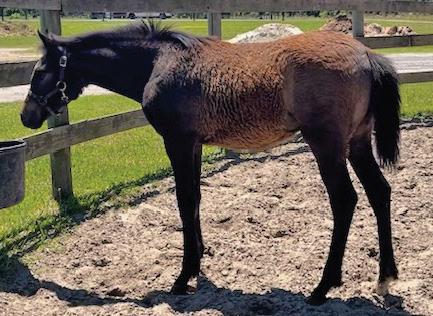

The police had to wait for the girl to finish riding her horse before they could take her aside for questioning. They assumed she hadn’t heard what had happened, but she told them, “No, I know,” as she took the seat across from them.
They were at the Southern California International Horse Show, an exclusive three-week event in the mountains. They had made an investigation room in one of the temporary horse stalls. The horse next door had returned, and through the wall they could hear it weaving and swishing its tail.
The girl was tiny, made of birdlike bones, dressed in sleek riding clothes. Her leg jiggled. She seemed distracted.
“Is this gonna take long?” she said. “Because I have another class.”
Detective Perez hesitated. She came across a lot of people in her job, but there were no people quite like horse people. They shouted if you turned on sirens. They scolded you if you approached the horses. They claimed
you were scaring the horses, but the animals were fine as long as people stayed calm.
They had horse shows like this one, intense competitions with a handful of the überwealthy. They spent all their time and all their money, dedicated their entire lives to animals they forced to serve their aspirations. Blue ribbons. Trophies.
Take the young lady in front of them. An unimaginable tragedy had occurred, and she was worried about show classes.
“We’re just trying to understand what happened here. We were hoping maybe you could—”
“Oh, I can tell you exactly what happened.” The girl sat back, crossed her neat black tall boots. “Do you have a mother?”
Maple’s mother had insisted she wear riding clothes to the horse stable, even though they weren’t there to ride. They were there to feed the horses carrots.
They had brought a big bag of them. The stable was only a mile away from their new house. It had been part of the promise of moving to California.
“Rancho Santa Fe has horses,” Maple’s mother had told her, like there weren’t horses everywhere in Texas. “The first thing we’re going to do is find you a new place to ride.”

Heather sometimes seemed to genuinely believe that Maple loved horses just as much as she did. It wasn’t that Maple didn’t like horses; she just thought they were a little scary, especially the horses at this barn. They were huge and immaculate, nothing like the unkempt quarter horses in Amarillo.
Maple was turned out in breeches, a Cavalleria Toscana shirt and gleaming tall boots. Her mother had taken her to Mary’s Tack and Feed yesterday and selected thousands of dollars’ worth of riding clothes.
“Anything you want,” she had kept saying.
Maple had had no idea what she was supposed to want. Her mom ended up picking, which satisfied them both.
But now Maple felt silly, dolled up in a stranger’s barn—her hair was even in two French braids—like she was auditioning for the role of rider. What if someone saw them? Not only was she over- dressed, but they were breaking the rules. There were signs everywhere that said not to touch the horses.
“Those are just for people who don’t know horses,” Heather said. Heather herself wasn’t exactly a pro. She had taken lessons in her youth. She had told Maple the story hundreds of times. How she had been the best rider, until her dad left and she was forced to quit.
She’d had to sell her horse. She’d had to stop going to the barn.
Maple had been told that story so many times it had imprinted itself on her psyche, become an integral part of how she saw her mom—hair in two braids, shiny black boots, sitting outside the arena while the other girls rode their fantasy horses, out of reach.
It wasn’t fair. The world owed Heather horses.
Maple’s mother could have ridden herself now. She had even taken a few lessons, but she always ended up frustrated. It wasn’t the same. It wasn’t what she wanted. It didn’t fix that event, as if the only way into her past was through her daughters’ future.
Heather preferred to watch her daughters ride horses. First, Piper, who had been a natural but who had quit when Heather pushed too hard. And now Maple, who was talentless and slightly fearful but willing.

Maple had always been a little captivated by her mother, who was beautiful, who was made even more beautiful by her strange, specific dreams. Heather wanted Maple to ride horses. She wanted her daughter to dress a certain way. She wanted Maple to have the right friends. She didn’t care about the things other moms seemed to care about—grades and morality and even happiness.
“No one’s happy,” she had once assured Maple, offering a crooked smile-frown. “Don’t worry about it.” She had pressed her daughter’s hair down. “I wish someone had told me that when I was your age. Then maybe I wouldn’t have thought I was missing out.”
Maple knew her mom had intended to make her feel better, to make her think about her own life, but instead it had made her think about her mom. When Heather kissed Maple’s dad, when she grinned on vacation, when she had congratulated Maple at her elementary school graduation, Maple thought: She’s not really happy. She just seems happy.
Right then Heather seemed happy, climbing up the rungs of a pipe corral to get a better look at a horse whose name was Desi, according to the engraved
plaque outside his stall.
“You should ride this one,” Heather said. “It would look so good with your hair.”

Desi was huge, probably over seventeen hands—in horse measurements, a hand was four inches, or the width of a hand. He looked a little spicy, prancing around the far end of the stall, showing the whites of his eyes. He was wrong for Maple in every conceivable way except one—his golden palomino coloring— and that was all her mother saw.
Heather stretched her palm out, which seemed to make Desi more nervous. The gelding tossed his head, swishing his golden mane. “He’s perfect for you.” Heather hopped down, startling the horse.
Heather adjusted her outfit and scanned the deserted aisle. She had dressed herself in discreet wealth. Everything expensive was slightly hidden: slivers of diamond earrings tucked beneath her hair, no logos on her leather purse. Her shirt was floral, simple. She could have gotten it from Walmart, but she hadn’t. She had gotten it at a boutique in Santa Fe for eight hundred dollars.
“I thought more people would be here. It’s Monday.” Heather placed a hand over her perfectly made-up eyes and peered off toward a row of trailers. She had found a housekeeper who could also do her makeup. She loved telling people this, like it was somehow exceptional. “I’m going to see if I can find anyone to ask about lessons. You can stay with the horses, if you want.”
Maple could tell that her mother wanted her to want to stay with the horses, so she nodded and dragged their enormous bag of carrots toward another barn.
Excerpted from Girls and Their Horses by Eliza Jane Brazier Copyright © 2023 by Eliza Jane Brazier. Excerpted by permission of Berkley. All rights reserved.It wasn’t that Maple didn’t like horses; she just thought they were a little scary, especially the horses at this barn. They were huge and immaculate, nothing like the unkempt quarter horses in Amarillo.




From The Plaid Horse managing editor Rennie Dyball, a picture book that encourages kids to accept and celebrate ALL bodies …




Rennie is the co-author of Show Strides with Piper Klemm, competes in the adult amateur hunter and equitation divisions, and is a passionate believer that all bodies are good bodies.















 PHOTO GALLERY
1 Guillame Preud-homme, Healing Strides of Virginia, Boones Mill, VA • 2 Madison Kastner, Dana Hall School, Wellesley, MA • 3 Healing Strides of Virginia riders Martha Ellen Cornwell and Eloise Entwistle • 4 James Morris judges the Novice class, including rider Mia Sciarretta, MET CT, Wilton, CT • 5 Brynn Langan, Concord Equestrian, Concord, MA • 6 Keira Thompson with her mom and co-coach Dani Corkhill, Dana Hall School, Wellesley, MA • 7 AEL Founder Sally Batton (in blue) welcomes riders to the competition
PHOTOS: ADAM HILL
PHOTO GALLERY
1 Guillame Preud-homme, Healing Strides of Virginia, Boones Mill, VA • 2 Madison Kastner, Dana Hall School, Wellesley, MA • 3 Healing Strides of Virginia riders Martha Ellen Cornwell and Eloise Entwistle • 4 James Morris judges the Novice class, including rider Mia Sciarretta, MET CT, Wilton, CT • 5 Brynn Langan, Concord Equestrian, Concord, MA • 6 Keira Thompson with her mom and co-coach Dani Corkhill, Dana Hall School, Wellesley, MA • 7 AEL Founder Sally Batton (in blue) welcomes riders to the competition
PHOTOS: ADAM HILL
“Start out doing whatever it takes, mucking stalls, getting riding lessons from professionals because you’re passionate about it. That’s what happened back then. Nobody just walked into the sport 20, 30, 40 years ago anymore than they do now...There are ways to do it. You just have to be creative and you have to say yes to that difficult question and then figure out how to do it.”
—ROBERT RIDLAND, U.S. Show Jumping Chef d’EquipeiTunes, Google Play, Stitcher, Spotify
theplaidhorse.com/listen

Hear more It Happens moments on the #Plaidcast at theplaidhorse.com/listen

I qualified for the Washington International Horse Show for the second time in 2019, the last year it was held in the Capital One Arena. My classic was the last class of the day before they set for FEI, so the international show jumpers (a.k.a. my heroes) were all in the stands watching while they waited to walk their class.

I jumped clear in the first round and knew I wanted to win it, so in the jump-off, I went for a gutsy inside turn that would all but guarantee the win if I could pull it off. I think the nerves kicked in and I ended up pointing my horse at a different jump right as we were making the turn. He got confused and came to a halt, as I tumbled off. Of the falls I’ve had off that horse, it stands out as the most memorable because victory was within reach!
Fast forward through the rest of the jump-off, and no one attempted that inside turn. But I did have a few riders say to me that they were glad to see someone go for it, even if not successfully!
I made it back to WIHS in 2021 when it was held at Tryon and jumped double-clear for third place, but I would have traded that placing any day to have gotten a top finish in the city.”

This winter, I had been showing in Hunter 2 all day at Thermal in the Green 3’3” Hunters on multiple horses, and later in the day I had the Performance Hunters. I did my first performance round on a horse for Nick Haness and ended up staying in the ring for the second round because they needed me at another ring quickly.
As I was picking up the canter at the far end of the ring someone yelled, ‘It is a handy!’ I thought, ‘Oh no, the greens didn’t have a handy but the performance horses do!’ So I trotted back down to the end of the ring and my mom taught me the handy quickly while I was in the corner of the ring.”
We all make mistakes. But horse people, as a group, aren’t always the best at handling them. So TPH reached out to some top riders to share their own show ring bloopers to prove, once and for all, that mistakes really do happen to the best of us!
During my first season eventing as a teenager, I was riding an older schoolmaster during the cross-country phase. This was my first three-phase ever and I was coming off of some bad falls & just needed a good experience.

The horse I leased was a packer and allowed me to safely get around a XC course and get my feet wet. While we were midcourse in the lower part of the field (out of my trainer’s sideline view), my horse decided he absolutely needed to poop and that he couldn’t possibly jump and poop at the same time. Being a bit of a nervous rider, I was too timid to leg him forward and he didn’t have enough momentum to make the fence.
It remains my one and only cross-country refusal to date. I’ve since made it a point to never allow a horse to stop to poop.
At WEF during hunter week, I was showing my longtime partner, Orlon aka Baby O, in the Older Amateur Owners and because he truly thrives in high pressure situations and in particular enjoys the International Ring. I was feeling pretty confident.
We picked up our canter and were headed to jump one when all of the sudden, he started to slow down. I quickly put on my leg to keep the forward impulsion, and when he slowed more, I pressed my spurs into his side. But it was too late and we stopped to make a manure pile about ten strides from the first jump. I tried to quickly get him to canter again but he wouldn’t budge until he was done. After what felt like an eternity and him adding in a little kick at the end for good measure, we were finally back to the canter. After needing to make a circle to get our pace again and having to pass my entire team, all hysterically laughing at the in-gate, he went on to lay down a lovely round.”
 PHOTOS: ANDREW RYBACK PHOTOGRAPHY (WIREMAN); SPORTFOT (PERONI)
PHOTOS: ANDREW RYBACK PHOTOGRAPHY (WIREMAN); SPORTFOT (PERONI)





OCCUPATION: Manager for Teddi Pritzker, former freelance groom
HOMETOWN: Rochester, NY
As a horsewoman, I am most proud of being able to understand my horses without words. I have been lucky enough to catch some ailments (both life-threatening and non-life threatening) very early because I could tell my horses were just “sad.” Being able to understand their moods is definitely something of which I am proud. To me, this is the basis of understanding each horse as an individual, which is most important. • I think the biggest misconception about our sport is you have to be a rider or trainer to have a successful career. There are many more vital roles in this industry. Grooming is essential to our equine athletes. Grooms manage the horses’ day from the moment they eat breakfast to the moment they receive their night-check hay and blanket change. Grooms are some of the best horsemen. Grooms spend each day learning how to improve the life of the horse, the best seat in the classroom is by your horse’s side. • Women in our sport are tough. Women and men compete equally, in the ring and out, which is the beauty of our sport. This sport is hard; it’s physical, expensive, and demanding. Tough women thrive in our sport. And in turn, they make excellent role models for young, tough girls.

Something I say ten times a day is GOOD MORNING! I think it is really important in our industry to have a positive attitude and starting the day off with a “good morning” is a good start. Positivity is key. I’ll admit, some mornings are just mornings and not good ones, but we must strive for great mornings! I also say “good morning” at all hours of the day, and it always lightens the mood when things aren’t going to plan or the day is stressful and longer than imagined! • My favorite horse book is the Heartland series. I was obsessed with those books in middle school. I would make my dad take me to Barnes & Noble the first day each one was released. • The most difficult part of life with horses is it is far from ‘normal.’ Those of us who are in the industry for life are unique, which is why we can adapt to the lifestyle. But burnout is real. It is very important to take a break and be normal, see your family, see your friends, go to that concert you’ve been wanting to go to, travel for yourself, attend a lifelong friend’s wedding. Even if it is just a week, pushing the reset button changes everything. Then you can jump back in with renewed energy and appreciation. (continued)



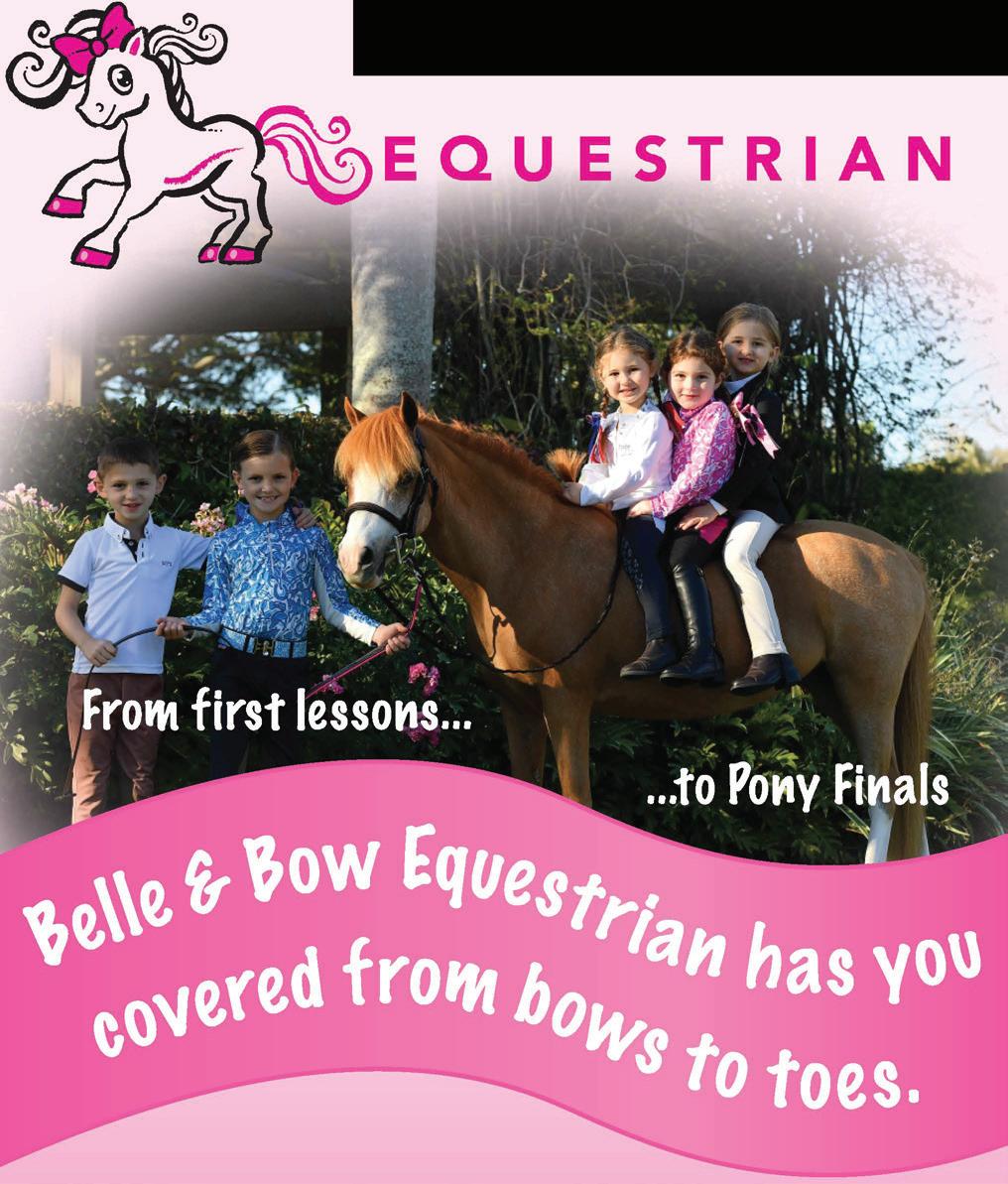

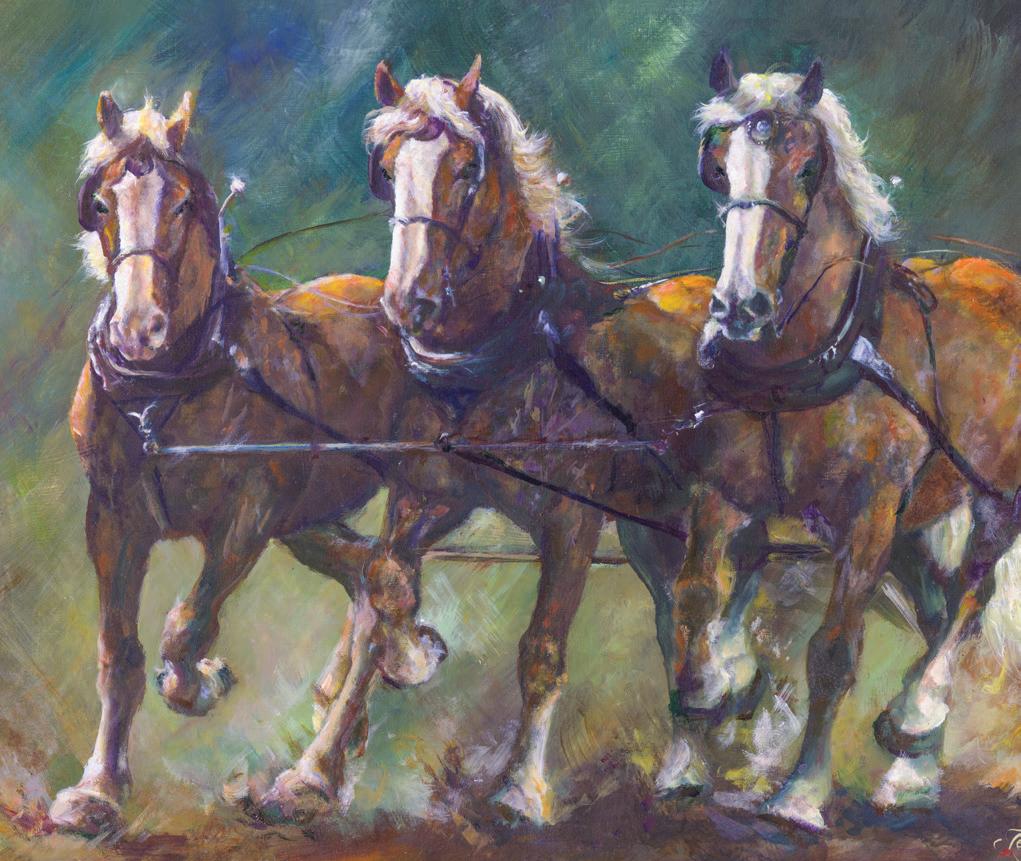
My favorite part about being a groom is caring for my horses as if they were my own children. I feed, bathe, and clean up after them. I watch with pride as they compete. I love having my own string of horses to care for; they are my little family. I think the most rewarding part of being a groom is when they look for you as soon as they come out of the ring. • One of the most important tasks in maintaining the well-being of horses is to respect their mental state. If they are anxious or nervous, it’s important to be a patient and a calm influence. If they love to hand walk and graze at a show, give them plenty of time to relax


in the sun. If they need alone time, it’s important not to be overbearing and fussy. When preparing them to show, I like to build in enough time to give them their space and not rush. When they have a big job to do, I try to not cause any extra stress. • My favorite grooming tool is: the Epona Glossy Groomer. It is a super flexible and soft curry comb. The horses love it, and I find it very comfortable to curry them for a long time. It really helps in making them shine! • One thing in horse care I wish more people would focus on is: properly fitting equipment. Walking around a horse show,
you can find all sorts of ill-fitting tack. It is extremely important that the saddle fits properly, and it is very easy to ask a saddle seller to come check it out. With all the special half pads and risers, it is also easy to make it more comfortable for your horse. Boots, bits, bridles, martingale length, and girths are just as important when it comes to proper fit. • One of my favorite horse show memories is a most recent one. I freelance-groomed for Hunter Holloway for FEI World Cup Finals in Omaha this year. I had met Hunter and Dylan last fall, and we became very good friends. To be asked to help them at this championship was






Success doesn’t come on its own. A good rider knows that the team they have is essential to their success, a great rider acknowledges the team for their joint success.



an honor, and for Hunter and Pepita to finish 3rd overall was such a surreal experience. I’m so proud of Hunter and Pepita, they are truly a very special duo. • One horse that is special to me is Team de Coquerie. He’s my heart horse. He has a heart of gold, the cheekiest personality, is the size of a pony, and he ran my world. I would take him for walks down the canal or through the woods like a dog, and he’d pick up sticks. He was my best travel buddy, I could always depend on him in a new place. Teamy had a fan club everywhere he went. He was an extremely talented and fast little guy—he took me to my first Nations Cup! He is happily retired now, and I went to visit him last fall.


“You must first develop a solid base of physical skills. Then, you have to train your mind to manage those skills.”
—GEOFF TEALL
You’ve embraced your inner Dale Evans. You are ready to learn how to saddle up, post, lope, use a curry comb, and clean out stalls. You’re as giddy as a kid on Christmas morning. You are going to be a rider, a horsewoman!

Setting goals for this adventure is important. Spend some time thinking about why you want to ride. Obviously, the first goal is to have fun and do something enjoyable and exciting. But what is it about becoming a rider that attracts you more than other hobbies? Informal discussions on forums and chat rooms produce many reasons. You enjoy learning something new and take pride in your accomplishments. Riding is a fun form of fitness, far more exciting and relaxing than using a treadmill and joining a “senior aerobics” class at the gym. It’s a new lifestyle with new people to add as friends. There’s an almost spiritual attraction to the power, wonder, and aura of horses.
Those are all general reasons. What you specifically want to do in the saddle might be harder to define. Right now, that might not be more than “riding.”
You may be at the “Dick and Jane” stage of your equestrian knowledge. You know that English and Western riding have different saddles and that English riders wear breeches and safety helmets while Western riders sport jeans and Stetsons. Beyond that, it’s an alien world.
On the other hand, maybe you’ve always harbored a secret desire to pop over obstacles in a hunter-jumper course or try to break 18 seconds in a barrel race. You daydream about moseying along a tree-lined path through a forest or galloping through the surf on a beach. Perhaps you want to compete and hang a few ribbons on the wall or go camping with your horse. As you look toward
retirement, you might consider buying some land and keeping a few horses. Or, maybe you’ll travel around the country with your horse, staying at parks and campgrounds near riding trails.
Those goals will probably change, particularly if you are new to riding, but having some idea of where you might want to end up helps you know where to start. A riding instructor plays a significant role in that journey.
An instructor is a person who will give you the knowledge to build the foundation for a long, happy, safe, and successful adventure with horses. She helps you discover your abilities, gives you confidence, encourages your learning, and motivates both you and the horse in your life (which could be a
lesson horse, a leased horse, or your own horse—I’ll talk about all of these in the pages ahead). She teaches you the basics of horse care and safe horse handling. If owning a horse is on your agenda, she can lead the search for your best partner.

Tracking down such a wizard takes time and effort. Lucky individuals find a great riding stable and instructor right away. Others ride with several people before they find something who “clicks.” A teaching approach that’s brilliant for one rider may totally fail with another. You’ll find that the “best” instructor is different for each person. And, as you develop your skills and change your interests, you will probably work with several instructors.
Your community may be blessed with lots of stables and a number of instructors. On the other hand, you may not have many choices. It is frustrating when you want to learn how to rein but live in hunter-jumper country. However, it is more important to find someone who is competent overall than one who focuses primarily on the details of a particular discipline. As a beginner or returning rider, you need to learn ore refresh the basics of riding, and those are the same no matter what kind of saddle you use. Balance, aids, “feel,” understanding
horse behavior, and safe handling of horses are universal.
When looking for an instructor, word of mouth is a good start. If you already have contacts in the local riding community, ask for recommendations. Visit local feed stores and tack shops and ask about stables and instructors. Someone at the store probably takes lessons herself or knows the local instructors. Look for the free local magazines distributed at feed stores and tack shops. They contain ads for stables, instructors, clinics, shows, and classifieds selling tack, trailers, and horses. Stables and riding clubs often post flyers on store bulletin boards. Attend horse shows. Wander around the trailers and hang out at the warm-up rings. Listen to the instructors as they coach their students, and watch the students as they ride.
Most states have a Horse Council or similar industry association or an equine office within the state’s Agriculture Department. They frequently maintain lists of riding clubs. Another option is to search the websites of breed and special interest groups like the Arabian Horse Association, American Quarter Horse Association, or the US Dressage Federation, as examples. National groups
have regional chapters and can give you leads on instructors in your geographical locations and area of interest.
And, as mentioned already, there are many groups on social media platforms specifically for older women riders. They often have geographic directories, so you can connect with local riders and ask for recommendations.
People teach for many reasons. For some, it is the foundation of their business. For others, it’s a sideline to support their own training and competition. Others are part-time instructors with “normal” jobs who teach to pick up some extra cash. Any one of them can be excellent or awful. Not all riders, even those with a wall covered with blue ribbons, are talented teachers.
All instructors, even the poor ones, can teach the basics. After all, it’s not hard to explain neck reining or posting diagonals. But a good instructor possesses other qualities. She should start at your level of ability and confidence, be even-natured, quiet but enthusiastic. She should be confident but not arrogant. And perhaps the most important quality of all, she should never stop trying to make riding and learning fun!
These traits are important no matter who she is teaching, but there are other concerns instructors must address when working with an older rider. One of the most important is understanding our physical limitations, mention functions, and emotional uncertainty. At most stables, the age group of the riders is skewed toward teenagers and a smattering of 20- and 30-somethings. They know the jargon of the horse world and are comfortable with the routines of a stable. You, meanwhile, may not know the difference between the pasture and the poll or what “holding the horse for the farrier” means. They jump into the saddle with ease while you awkwardly hoist yourself with a death grip on the pommel. They move with coordination and flexibility while you gimp to your car after your lesson and look for the ibuprofen in your glove compartment.
Instructors always seek new clients, and older riders are a potential source of new business. Some stables are devoted “lesson barns” with “schoolmaster” horses
to learn general riding skills on. Others may focus on serious competition, may be firmly locked into one discipline, or may require you to have your own horse. Those stables that offer a wide range of classes and activities are generally welcoming. Some go so far as to have adult-only group lessons and activities, including after-lesson Happy Hours, trail riders, “Girls Only” weekends, and non-riding social outings. They recognize that friends and companionship are two of the main reasons why women, particularly older women, ride. These instructors also appreciate our attitudes. Many of them say that older riders are their easiest and most enjoyable
students. We often treat our instructors more respectfully and professionally than other students. We focus on making ourselves better riders. Almost universally, we are hard workers who want a good grounding in the basics of riding and horse care. We want to be safe and have fun. We expect to get our money’s worth and are willing to put in the effort that requires. Most of us are not in a hurry to meet some goal, which makes for a more relaxed learning environment for both our instructor and us. More so than younger riders, we enjoy the nuances of understanding how to communicate with our horses and the theory behind the cues and the exercises. The instructors recognize



that many of us lack confidence and are often even frightened of riding, but we are determined to work through that. They work with us to overcome fear and find joy. In addition to classes, we boost our equine knowledge by reading, watching educational videos, and attending clinics.
In general, instructors find that competition is not high on our bucket list, although participating in low-level local shows is an exciting accomplishment. More commonly, we want to saddle up for a trail ride or work on developing better riding skills for the sheer enjoyment and sense of accomplishment in doing so. Fitness is a concern, particularly for those of us who’ve not been diligent in that area. A few instructors require students to follow a fitness plan as part of their riding program. Most, however, encourage riders to work on physical conditioning and weight control independently.
For more information and to purchase a copy of the book, visit www.ridersofacertainage.com.







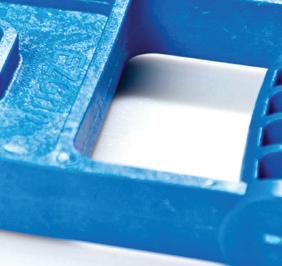

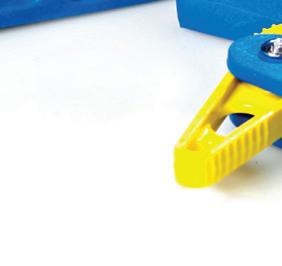








A good instructor should start at your level of ability and confidence, be even-natured, quiet but enthusiastic. She should be confident but not arrogant.

























































That is so awesome






This is great!


















































Bravo. Bless you for your rescue



Smudge was my favorite in the class! He was so perfect


















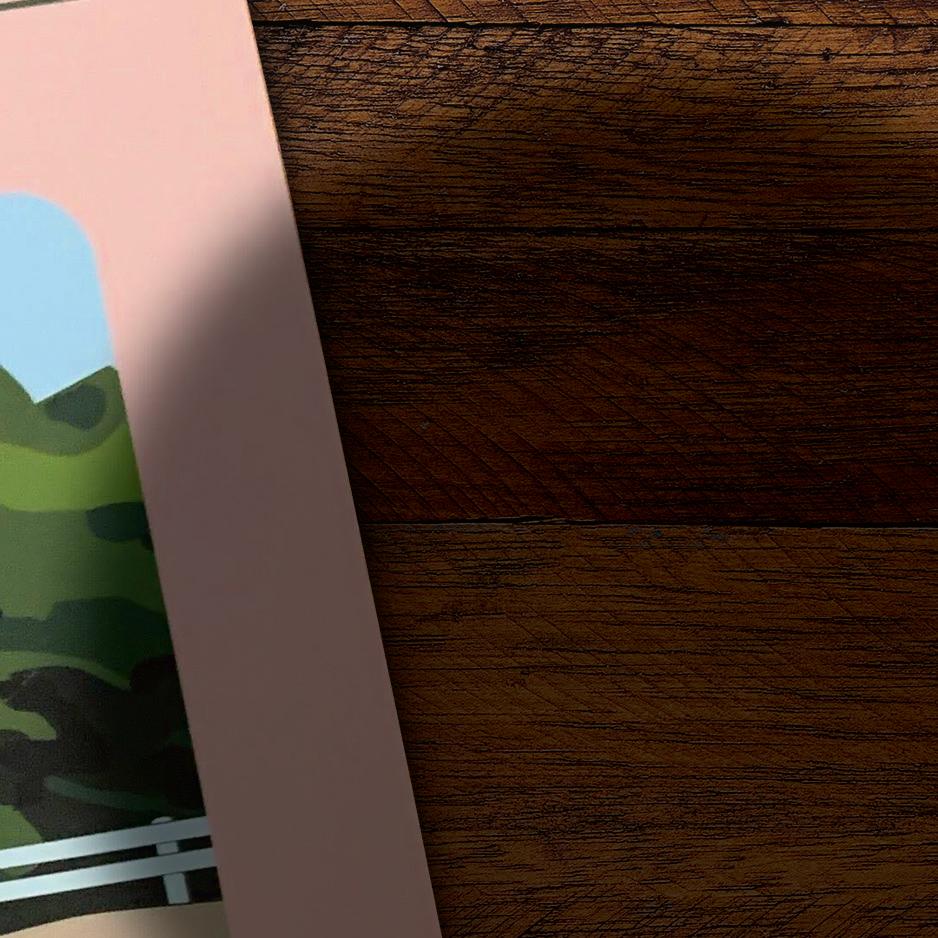


great pride in giving riding lessons, moves to a new barn that’s full of he begins to doubt himself and his world—all while his rider is doing story of self-acceptance and friendages, Good Boy, Eddie captures the we form with animals, and what about ourselves along the way.

Order your copy at theplaidhorse.com/books

Up, FLOP. Up, FLOP. Up, FLOP.
“That’s it, you’re starting to get it: Up, down. Up, down. Up, down. That’s how you post the trot,” says the instructor. “But try to sit more lightly on Eddie and not come crashing down like a sack of potatoes, okay?”
I’m teaching my first lesson at New Barn and things are going pretty well. I am a school horse, and it’s my job to teach people how to ride. The instructor, Melissa (she’s the person who teaches the lesson with me), is standing in the middle of the ring while I trot around her in a big circle. The way my rider flops down in my saddle doesn’t hurt, it’s just a little uncomfortable. But I can tell that she’s new to riding, so it’s fine with me. We go around and around the ring. There are walls on every side to keep the wind out. Wooden beams crisscross the high ceiling and I think I can see some birds’ nests tucked up in the corners. Before I came here to this New Barn, I taught lots of riding lessons at a place much bigger than this one. I was one of about fifteen school horses back at the Old Barn. I had so many riders I

eventually lost count! I really liked it back at Old Barn and I’m not sure why I had to leave, especially because I thought I was good at my job.
My new rider—Melissa keeps saying “Kennedy,” so I suppose that’s her name—was very nice to me in my stall when we were getting ready for the lesson, chatting the whole time. She smelled like soap and flowers. I don’t know exactly what she was talking about, but she had a lot to say. And I was happy to listen.
You might be surprised to know that horses understand about seven to ten spoken words. I call them spoken words, rather than English words, because the people I know speak more than one language. I personally know nine words. But the really great thing is that I don’t need a whole lot of words to communicate with people because I can interpret so many emotions. I get body language, too, and I always know kindness when I feel it. Basically, I understand much more than people think.
The specifics vary from horse to horse, but I personally understand all the following words when they are said aloud by people:
entirety. I love a good boy, Eddie. We walk a lap around the ring before Kennedy steers me to the center. Melissa pats my head. Gallagher, one of the horses who gets turned out in the paddock with me, is also in the ring now. His lesson is about to start. We give each other a look, like a changing of the guard.
It’s his turn now to take care of his rider. I love what I do, but I’m still a bit relieved when the lesson is done. It’s hard work to keep a rider safe. Also, the end of the lesson means I get a nice brushing, and sometimes a carrot.
gripping the saddle with both hands as she allows her body to slink down to the ground. When her feet hit the dirt, she stumbles back a few steps as she regains her balance. I may not be very big for a horse, but it’s a long way down when you’re not very big for a person.
Kennedy gives me a big pat on my neck. It was a good first lesson. Melissa leads me out of the ring, and we walk outside on the way back to my stall. An evening breeze rustles the leaves on the trees all around us. I watch as a few of them float lazily to the ground.
I think I’m going to like this place.
When you take the words that Melissa just said to Kennedy, for example, all I really got out of that was trot. So, I kept trotting. Melissa’s voice also sounded kind and encouraging, which are good signs that I should continue what I’m doing; that I’m helping my rider learn.
As I walk past Gallagher, I wish him good luck. Horses don’t communicate out loud the way people do, but I can hear what other horses are telling me, and they can hear what I tell them, especially once we get to know each other. People don’t pick up on this, of
I also know the meaning of two sounds that aren’t technically words. I know that the clucking sound—when people suck down tight on their tongue and then release it—means to move forward. If I’m already moving forward, then the “cluck” means to go faster. (I’ve come to learn that people can mean more than one thing based on a single sound. It gets a little confusing.) I also know the sound of someone shaking my grain in a feed bucket, which means it’s time to come into the barn to eat.
ALL of us know that sound, even from two paddocks away.
I feel pressure as my rider pulls on the reins, drawing the metal bit back into the corners of my mouth. I slow from a trot to a walk before I even hear Melissa say whoa.
“Good boy, Eddie,” she says with a laugh. Now that, I understood in its
course. If they did, we’d all understand each other with a whole lot less fuss! Horses do “speak” to each other from time to time, but mostly it’s just listening and feeling. If you ask me, I think people could probably benefit from less talking and more feeling.
Horses use our bodies, too, to show what we are thinking. People can usually decipher our body language, if they’re paying attention. Pinned ears means we’re angry, and ears perked forward means we’re concentrating on something. One or both ears cocked gently back means we’re listening.
It all seems much easier than the way people communicate.
Kennedy takes her feet out of the stirrups and swings one leg over the back of my saddle. Melissa is taking her through the steps of dismounting. Next, Kennedy slides down my left side,
Rennie Dyball is the co-author of the Show Strides novel series and managing editor for The Plaid Horse magazine. Rennie grew up riding school horses and now shows on the A circuit in the adult hunter and equitation divisions. She hopes that Eddie will remind readers of all the “schoolies” they’ve known and loved. Learn more about Rennie at renniedyball.com.

I can interpret so many emotions. I get body language, too, and I always know kindness when I feel it. Basically, I understand much more than people think.
Landings
� Ataforwardwalk,onaflat/levelsurface,horses shouldlandheel-firstandmediolaterallybalanced.
Howisyourhorselandingbarefoot?
�
filminslowmotionat groundlevel,fromthe sideandthefront.
flatheel-firsttoe-first




Deepfooting,unevenground, inclines,declines,or“lazy” movementwillaffectlandings.
Checkyourlocalagriculturalextensionandwebsitedatabasestosee iftheyhavehaytestaveragesandtakeyourbestguess.


Whatareyoufeeding?
Forage-basedcarrier: Supplementchoice:
Readinglabels Avoidaddediron(lookfor � "ferrous"iningredients).






Lookforaminimumof150mg � copperand450mgzincperday tomeetfrankdeficiencies.





Includeimportant � limitingaminoacids.





Avoidfillersandsweeteners. �
Source:Dr.Kellon’sNRCPlus, NRCRequirementforHorses
lateralbalancedmedial


















Pleasenotethatsome laminitichorsesmayhavea veryexaggeratedheelfirst landing,oftenaccompanied withstiffandsoremovement.
Considerations
Horsestypicallymeetorexceeddailyiron requirementswiththeirforageandwater. Moremaybeneeded,especiallyin highironareas.
Methionine,lysine,andthreonineare neededtoproperlyutilizeproteininthe diet.Supplementsshouldbeingramsper day,notmilligrams.
Duringhoofrehab,trytostickto starch<4%andESC+starch<10%.Alfalfa, wheat,soy,etc.cancausehoofsensitivityin somehorses,eveniftheyarenotmetabolic.



THEHUMBLEHOOFREHABGUIDE PAGE10
considerre-sampling.Shakeanysurface dirtfromthehayandpullsampleswith cleantools.Iftheironamountsarenot simplydirtcontaminants,thehaymaybe incrediblydifficulttobalanceforhoof rehabanditmaybenecessarytofind anotherhaysource.
THEHUMBLEHOOFREHABGUIDE PAGE11














HORSE SHOWS




SPRINGTIME IN DIXIE
Germantown, TN
APRIL 5-8, 2023

Green Pony Hunter
Ted Lasso & Penelope Sugg
Low Adult Hunter 2'6"
Golden & Joy-Elizabeth Elliott
Children’s Hunter
Special Addition & Avery Hanna
Adult Amateur Hunter
Brewsky & Reagan Bugg
COMMONWEALTH
NATIONAL
Culpeper, VA
APRIL 19-23, 2023
Performance Hunter 3'3"
Music Man & Grace Long
Pony Hunter
All In Good Time & Elsie Jane Vaughters
USHJA 3’ Hunter
Mr. President & Sophia Vella Tanner
Green Hunter
Konfetti & Gabriella Conte
COLORADO
SPRING PREVIEW
Parker, CO
MAY 10-14, 2023
Performance Working 3'6"
Q King of Hearts & Aedan Mooney
Children’s Pony Equitation
Dante’s Inferno & Elizabeth Jones
JR/AO Hunter 3'3"/3'6"
Almond Joy & Hannah Wright
Short/Long Stirrup Eq
Shining Star & Bella Willis
SOUTHWEST CLASSIC
Tyler, TX
MAY 24-28, 2023
Baby Green Hunter
Lorenzo Van Stal Romano & Colleen Acosta
Beginner Rider Hunter
Bardot One & Summer Kirchner
1.0 m Jumper
First Love Riverland & Elizabeth McDonald
Take 2 Thoroughbred Hunter
Quiet Prospector & Abigail Gass







We Offer:

PLEASE
Serving



 PHOTO GALLERY
1 That blue ribbon feeling in the walk-trot ring •
2 Zacko Hardin and TSH First Edition, winners of the Grand Prix of Flintridge • 3 Cameron and Julian Harrison • 4 Successful first leadline class •
5 Michelle Morris and Lykke Li-Terma Z, winners of the USHJA National Hunter Derby • 6 Holly Farmer and Ceres take on the derby • 7 Kate Considine and Kansas City in the derby
PHOTOS: LINDSEY LONG PHOTOGRAPHY
PHOTO GALLERY
1 That blue ribbon feeling in the walk-trot ring •
2 Zacko Hardin and TSH First Edition, winners of the Grand Prix of Flintridge • 3 Cameron and Julian Harrison • 4 Successful first leadline class •
5 Michelle Morris and Lykke Li-Terma Z, winners of the USHJA National Hunter Derby • 6 Holly Farmer and Ceres take on the derby • 7 Kate Considine and Kansas City in the derby
PHOTOS: LINDSEY LONG PHOTOGRAPHY
“I believe we can change our sport. I believe that we can be a part of something absolutely unbelievable if we all work together...I think you have to envision what you want the sport to be. And I think that we all have that capability to change things and make little adjustments that eventually turn the sport into what we’d like to see it be down the road.”

 —GEORGY MASKREY-SEGESMAN, Whitethorne LLC
—GEORGY MASKREY-SEGESMAN, Whitethorne LLC


















